Learn the benefits of beginner yoga for men. Have your questions answered and experience some free Man Flow Yoga workouts at the end of this post. [Post updated for 2022!]
This Guide Includes:
- Who is Dean Pohlman? What is Yoga for Men and Why Am I Qualified to Write This?
- Is yoga just for women? (Not anymore)
- Is yoga for men different than yoga for women?
- How should you modify the postures? (Compared to women & more experienced practitioners)
- Typical Yoga Questions Men Have
- What are the benefits of yoga for men?
- Should men do yoga?: The main concerns from men who are considering whether or not to do yoga
- As a guy new to yoga, what should you keep in mind?
- Is yoga enough to keep you fit?
- Are yoga for workouts alone enough?
- Should I do yoga before or after a workout?
- How often should I do yoga to see results?
- Getting Started With Yoga
- Yoga gear you’ll need to get started: Equipment & proper clothing.
- How to get started with yoga?
- What are the best types of yoga poses for men?
- The 8 best yoga poses for men (with modifications).
- The best free yoga videos on Youtube.
- Next Steps – Yoga for Beginners and how to find the right yoga teacher/program.
Who is Dean Pohlman? Why Am I Qualified to Write This?
Since 2012, I’ve been creating advanced and beginner yoga for men videos to help guys who want to improve their fitness with yoga. My first “students” were teammates from my college lacrosse team. I started my YouTube channel because I wanted guys to know that yoga could help them improve their fitness. It wasn’t just something for women. Over the years, that YouTube channel evolved into a top-rated brand I called Man Flow Yoga. It focuses on fitness-centric, no-nonsense yoga for men & athletes. Since then I’ve also created:
- The Yoga Fitness for Men book, published by DK Publishers in May 2018, #1 New Release in 3 Categories on Amazon (Men’s Health, Yoga, & Stretching); translated into German, French; sold worldwide
- Top 3 Book in Amazon UK (#1 in Practical Golf Guides & #3 in Fitness Through Yoga)
- Top 20 Book in Amazon US (Men’s Health, Stretching, & Yoga)
- Yoga Boost (Amazon’s Choice for “mens yoga” and “yoga for men” and “yoga for beginners”, over 30,000 copies sold)
- Yoga Excel: Yoga for Athletes (Amazon’s choice for “yoga for athletes”)
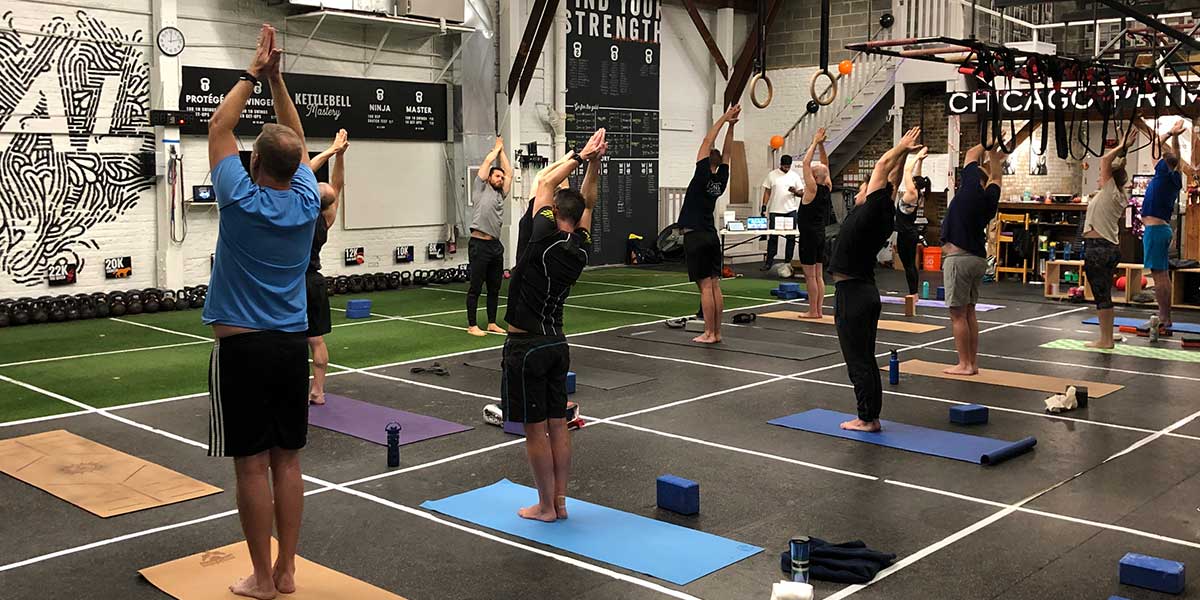
Is yoga just for women? (Not anymore)
Prior to 2012, if you were a guy in a yoga studio, you’d probably be one of two guys there – if there even were any guys. Now, it’s not uncommon to walk into a class that’s equally split between men and women. So what happened?
A few things
In 2019, over 25% of those who practice yoga are men. Many guys are using yoga in addition to weight training, running, training for triathlons, and general fitness. It’s now very common for guys to go to the gym one day, and then the yoga studio the next. And almost every professional and college athlete is using yoga to complement their training.
Yoga has officially made its way into mainstream fitness. Are you in? Let’s talk about some of the benefits.
*I should mention here that yoga was originally only practiced by men. The form of yoga that was practiced at its conception is completely different from the part-fitness, part-spiritual form of yoga that is primarily practiced at yoga studios today. Don’t worry – not all forms of yoga are spiritual. The degree to which a yoga class is spiritual mostly depends on your yoga instructor.
Is yoga for men different than yoga for women?
As a guy who created a brand with beginner yoga for men in mind, I would argue that women and men do practice yoga differently. My main reason for that is for the simple fact that men and women have different bodies.
If you want to get the most effective workout you can, while keeping yourself safe and lowering your risk of injury, it’s important to recognize and apply the differences that exist between a male and a female human body.
- Men are typically less flexible than women.
- Men have a higher center of gravity. They tend to utilize their arms, chest and shoulders more often than their legs, whereas women will use their core and lower-body.
Looking For A Program?
If you’re looking to start a men’s yoga workout routine for beginners to lose weight, gain muscles, flexibility, and strength, Man Flow Yoga offers on-demand structured programs that complement your lifestyle and schedule. Sign-up below!
Signup for the FREE 7-Day Challenge
How should you modify the postures?
(Compared to women & more experienced practitioners)
Men are less flexible than women. Women evolved to give childbirth. Men did not. Because of this, women usually have much more flexibility in their hips, and their joints are looser as well. As a result, women are typically significantly more flexible than men.
If you’re getting started with beginner yoga for men, it’s important to understand these anatomical differences. Otherwise, you risk getting injured by pushing yourself to the same flexibility standard as women.
Here are some ways men should practice yoga differently than women.
Lower Hip Flexibility
- Feet closer together in lunges
- Less intense hip openings
- Bending your knees during hamstring or adductor stretches
Less shoulder flexibility
- Using a strap behind the back instead of interlacing your fingers
- Bending your arms instead of straightening your arms
- Not going as deep into downdogs for your shoulders
Less spinal mobility
- Twists not as deep
- Forward folds not as deep
- Backbends not as deep
Women have stronger cores & hips than men, but men have stronger upper bodies.
Women tend to hold their center of gravity in their hips and core. Men typically have their centers of gravity higher up in their shoulders. This means women are more likely (and more intelligently) to utilize their hips and core to accomplish a given task, while men like to use their arms, chest, and shoulders to push or lift whatever the situation requires.
In practice, this means that women have an easier time with certain core and hip-focused exercises, such as boat pose; while men will have an easier time with planks and yoga pushups (called a “chaturanga”).
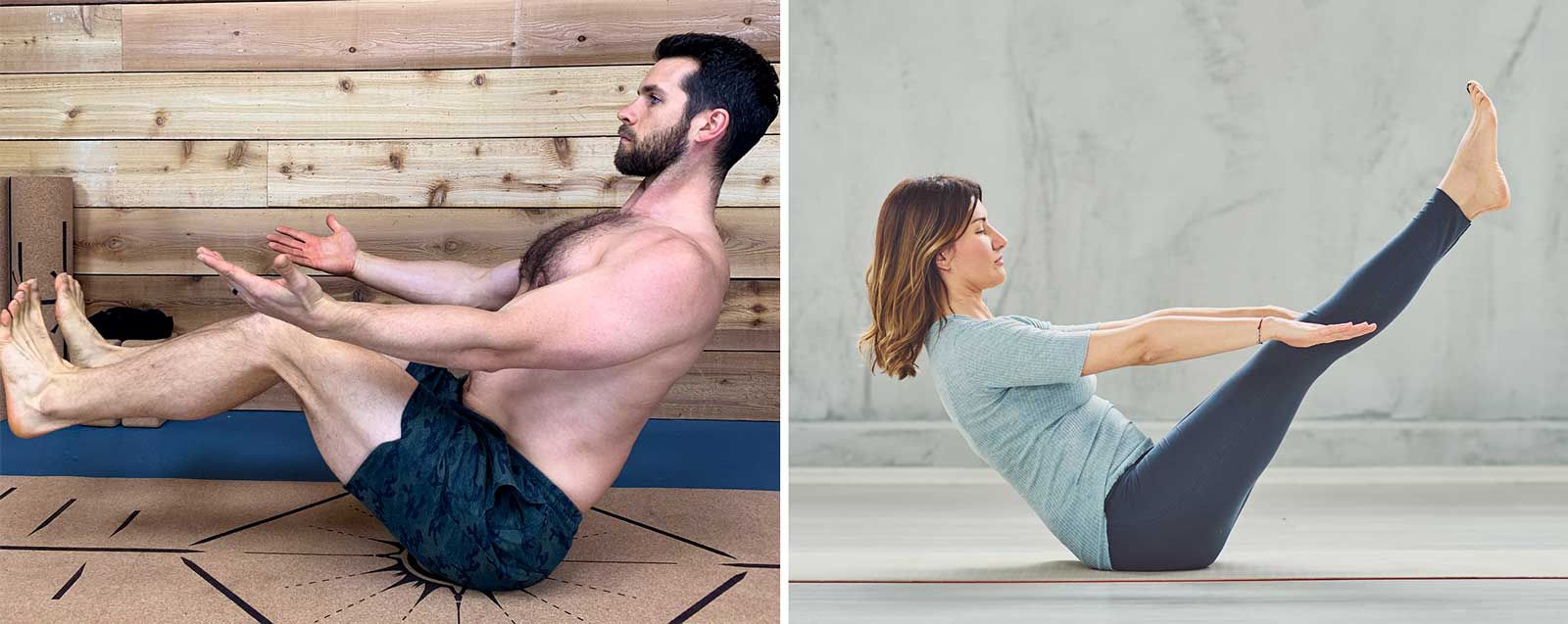
Boat pose is one pose that women have much greater success with. Their stronger hips & core make it easier for them to lift their legs. Their lower upper-body mass doesn’t weigh them down as much.
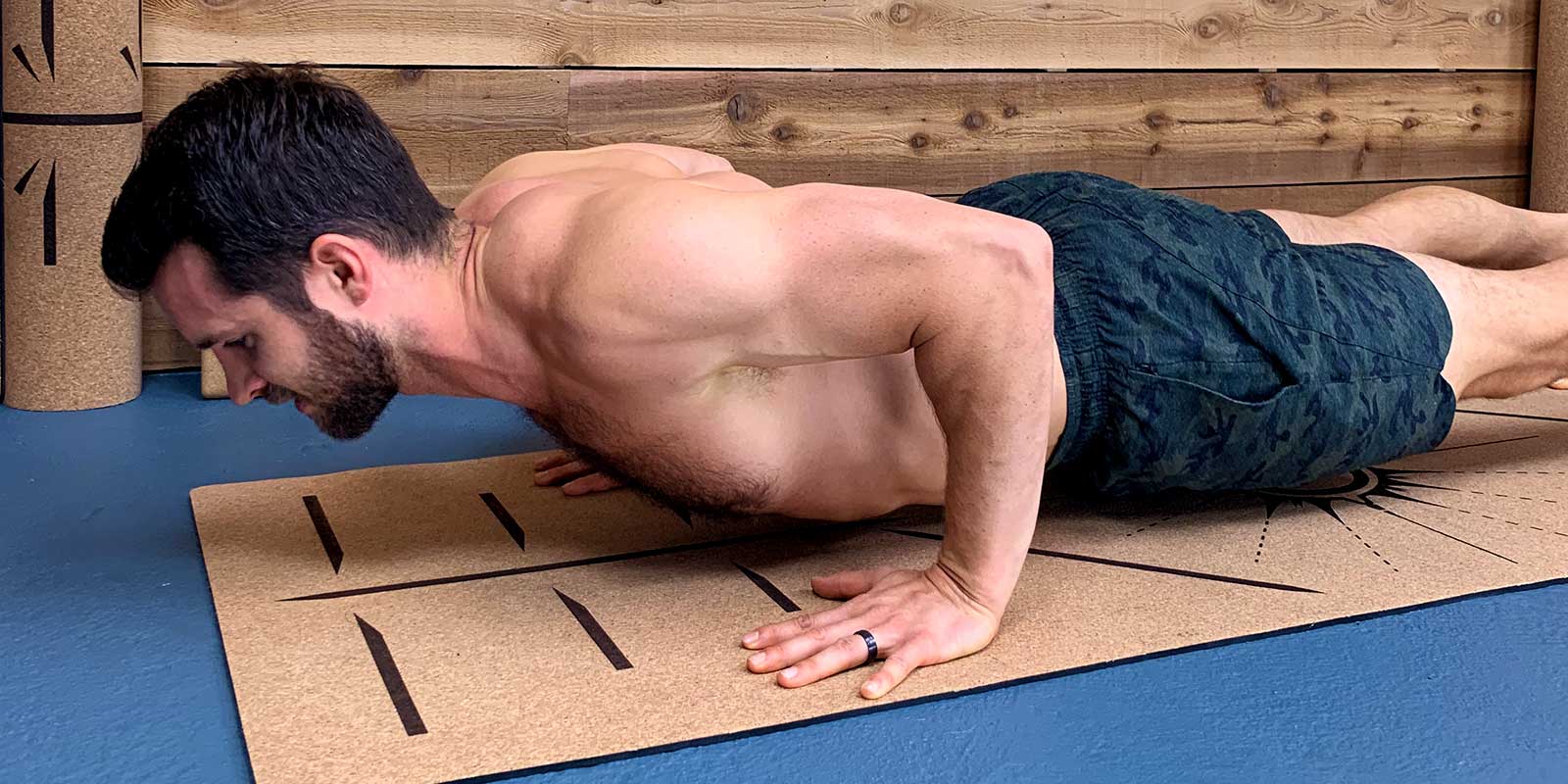
Holding a low plank position is usually much easier for men. This is because men tend to have stronger upper-bodies.
Important Note: Age influences flexibility, too! In addition to flexibility differences due to gender, we also lose flexibility as we age. The most significant flexibility jumps tend to happen right around the 45 to 50 year old mark. But, you’ll notice a big difference between every decade of your life. So keep in mind that if you’re older, you shouldn’t expect to be as flexible!
From there, we get into 2 other major differences:
Men in our society are expected to be more emotionally & spiritually reserved. They’re less comfortable attending a traditional yoga class in which the instructor goes into non-fitness aspects of the routine, gives life advice, or talks about how the moon cycle is affecting your period.
Men have different fitness goals than women. Most men are interested in building more muscle. Many women are interested in the “toned” look. Most [heterosexual] men are not interested in flexibility for sexual purposes either, while it’s something that is seen as sexy for women.
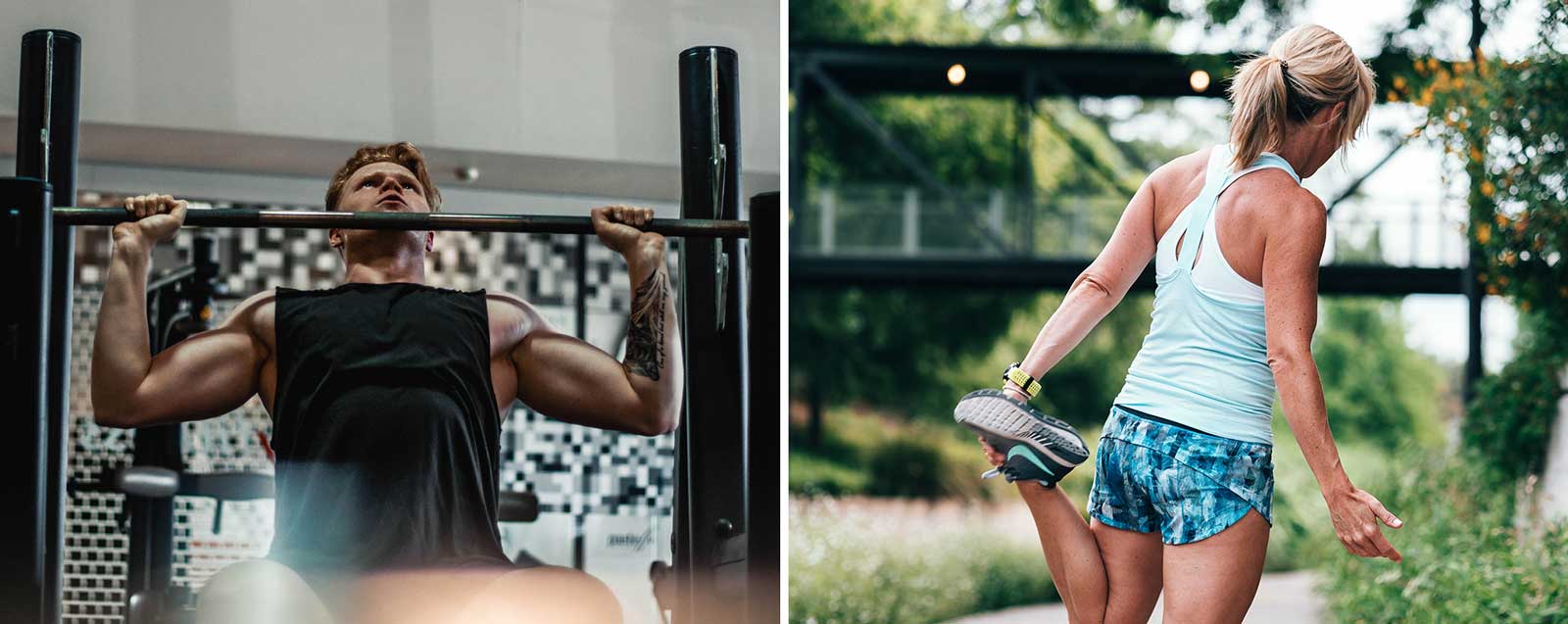
I’m not saying these are absolutes. Some men are more flexible than women. Many women have trouble utilizing their core and hips. Some guys might feel comfortable attending a yoga class that focuses on non-fitness aspects. There are plenty of women interested in building muscle mass. What I’ve included here are generalizations, and as such, don’t apply to everyone. But they apply to a majority.
Typical Yoga Questions Men Have
- What are the benefits of yoga for men?
- Should men do yoga? The main concerns from men who are considering whether or not to do yoga.
- As a guy who is new to yoga, what should you keep in mind?
- Is yoga enough to keep you fit?
- Are yoga workouts alone enough?
- Should I do yoga before or after a workout?
- How often should I do yoga to see results?
What are the benefits of yoga for men? Here are 13.
What can yoga do for you? It’s no secret that professional athletes of all sports have adopted yoga in some shape or form as a significant part of their training routine. Fitness-centric yoga has proven physical fitness benefits, such as improved balance, increased flexibility, and better body awareness (not to mention many more). But it also has proven non-fitness benefits, such as improved mindfulness, better posture, decreased stress, better sleep, and even increased testosterone.
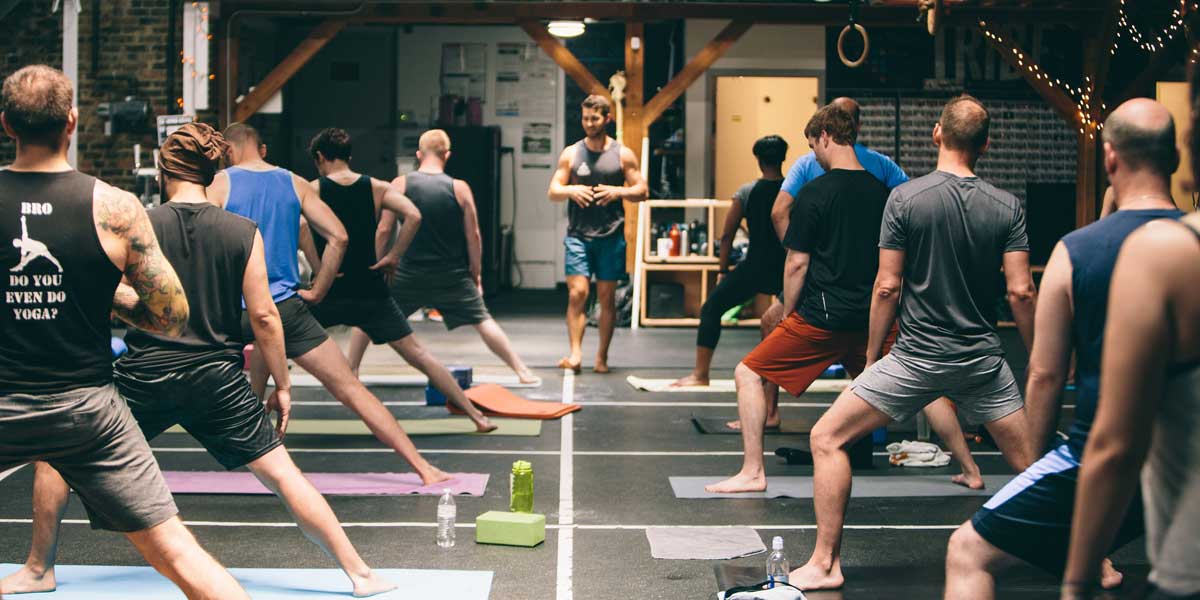
But you’ve still got guys who aren’t convinced. When faced with the decision to spend their hour of exercise on a yoga mat or in the weight room, most guys concerned with building muscle or getting stronger will choose the weights.
The truth is that by combining yoga with what you’re already doing – be it weights, crossfit, calisthenics, or triathlons – you’re going to get better at what you do, prevent injury, and recover more quickly.
Below I’ve listed the proven benefits of yoga for men (and women):
A few caveats here:
- I’m focusing on PROVEN benefits – You won’t find any pseudoscience in this blog. I’m focusing on the results that can be measured; not what a yoga “guru” told you.
- These are benefits specific to YOGA, and not typical exercise or calisthenics – We all know that exercise is good for you, but what benefits are particularly noticeable when it comes to yoga? I’ll cover those instead of the general stuff.
- 1.Yoga for flexibility – There are few types of exercise that focus on flexibility as much as yoga. Most traditional types of exercise focus on strength and endurance (think of running, weight training, or calisthenics), but one of the typical benefits you’ll hear about from yoga is increased flexibility.One of the main reasons for this is the nature of the postures. While practicing yoga, one of your goals while doing yoga poses is to get as deep as you comfortably can into the posture, or in other words, going into your maximum range of motion. While here, you focus on controlled breathing, helping to activate the parasympathetic nervous. When this happens, the parasympathetic nervous system releases hormones and neurotransmitters, which tell the muscles to release tension. This allows your muscles to lengthen, and this ability of the muscles to lengthen (elasticity, if you will), is the definition of flexibility.

- 2.Improved joint heath / joint pain relief – This is one of the most noticeable benefits of a regular yoga practice. Doing yoga consistently helps to improve your joint health and decrease joint pain in a number of ways. Stretching and flexibility work helps to relieve tension on the joints caused by muscle tightness, and the strength work in yoga helps to address muscle imbalances that also contribute to joint pain.
- 3.Increased mobility: What is mobility? Mobility is an umbrella term that includes many aspects of movement, but it is most easily understood as “strength in extended range of motion”. Mobility combines flexibility with strength. It is your ability to exhibit strength while also working on your flexibility. Flexibility, on the other hand, refers to the passive ability of soft tissue to stretch. When practicing mobility, the muscles continue to hold tension, and this allows you to generate force when you are near the end range of motion. There are very few exercise types that focus on mobility in this way, which makes yoga particularly effective at helping to increase mobility. And since you’re using your bodyweight (and not a significant amount of resistance), you’re able to focus more on the mobility aspect. A fitness-focused yoga workout will include aspects of both mobility AND flexibility, and with beginner yoga for men, you can start to improve both immediately.
- 4.Correction of muscle imbalances – A “muscular imbalance” refers to one muscle being stronger than its opposing muscle. It’s what happens when you spend too much time doing one exercise, and don’t do enough of the opposing exercise. But it also happens as a result of our day to day movements (or lack of movements).
- Have you heard the phrase “sitting is the new smoking”? This is a good example showing that physical fitness problems aren’t just caused by exercise – they’re also caused by what we do during the day. Yoga helps to correct muscular imbalances because it helps us to “undo” or “counter” the positions are bodies are in while we are inactive. These counter movements include hip strengtheners, hip openers, core strengtheners, backbends, and twists, just to name a few of the most obvious examples.
- Man Flow Yoga goes above and beyond a typical men’s beginner yoga workout to address other common imbalances as well, through specific hip strengtheners and strengthening of the scapular stabilizing muscles.

- 5.Greater mind body connection / mind-body awareness – This is another one of those benefits that you can get from exercise in general, but you’ll notice to a much greater degree when working on it with yoga. The unique format of practicing yoga postures – (1) breathing, (2) isometric strengthening (holding the posture), and (3) continually refining the technique – allows you to practice mind-body awareness to a greater degree than other more traditional types of exercise. Addressing these 3 aspects of mind-body awareness is critical in terms of effectiveness.
- (If you are doing yoga, but not frequently checking in with your technique, then you’re not getting the mind-body awareness benefits. That’s why it’s important to find a yoga technique focused on form, if your goal is to maximize your physical fitness level through yoga. This is where Man Flow Yoga really stands out from other types of yoga, as it adds the element of proper technique and muscle activation to its workouts.)
- 6. Improved balance – Balance is another aspect of strength that is regularly practiced in a yoga workout; one that you’re not going to get as much work on in another type of workout. There are specific balancing postures in yoga that challenge your ability to stay upright, both from a strength perspective as well as a balance / coordination perspective. Improving your balance helps to (1) increase your body awareness, (2) builds stability in your joints, and (3) helps with injury prevention. It’s also incredibly important in helping to maintain physical fitness and strength levels as you get older. Balance is something that you have to practice in order to retain. If you don’t use it, you’ll lose it.

- 7. Breath control and improved breathing – There are few forms of exercise that focus on breathing as much as yoga. Breathing is critical to any form of fitness, but you rarely practice it. Proper breathing helps you improve your physical performance by bringing fresh oxygen to the blood in your muscles. But it also improves us mentally, enabling us to make smarter decisions. Better breathing means more blood flow to the brain, and the ability to make smart decisions when you’re under pressure.
- 8.Faster recovery time – Practicing yoga regularly helps you decrease your recovery time for two reasons in particular. The first reason is that much of yoga is restorative, and that it helps your muscles release tension, lengthen, and you recover when this happens. The second reason is that increased flexibility helps you recover in less time. When your muscles are more flexible, you recover more quickly.
- One of the best times to stretch is right after a strength workout such as weightlifting. Static stretching of fatigued muscles performed immediately following the exercise(s) that caused the fatigue, helps not only to increase flexibility, but also enhances the promotion of muscular development (muscle growth), and will actually help decrease the level of post-exercise soreness.
- After strength training, your muscles are shortened. If the muscle is not stretched after strength training, it will retain this decreased range of motion the buildup of lactic acid will cause post-exercise soreness. Static stretching of the “pumped” muscle helps it to become “looser”, and to “remember” its full range of movement. It also helps to remove lactic acid and other waste-products from the muscle.
- Source: https://web.mit.edu/tkd/stretch/stretching_3.html
- 9.Decreased risk of injury (in particular from soft-tissue injuries) – The mobility, strength, and balance work found in yoga helps to prevent injury caused by general weakness or inflexibility. The restorative stretching helps to prevent injury from overtraining.
- One of the biggest causes of preventable soft-tissue injuries is a lack of flexibility. A lack of flexibility places greater strain on the joints, tendons, and ligaments. Improving your flexibility through beginner yoga for men reduces this unnecessary joint tension, and helps to avoid preventable injury.
- Much of yoga also helps to correct muscular imbalances, improve motor control (aka increase muscle activation), and this is helpful for preventing injuries due to improper mechanics.
- Bottom line, with more flexibility and greater muscle control, you will reduce your risk of injury.

- 10. Improved hormonal levels (testosterone increase) – Our ability to have optimal hormonal levels is largely based on a healthy balance between the (1) parasympathetic nervous system and (2) sympathetic nervous system. If you are always stressed, muscles tense, and unable to relax, you will have low testosterone levels. That’s because your body only produces testosterone once the parasympathetic nervous system (your rest & digest state) has been activated and your feel at ease.
- Conversely, your sympathetic nervous system (fight or flight) is what utilizes testosterone stores; but if you never learn to relax and disengage, then you’ll have lower testosterone levels.
- Yoga helps you relax and improves your mindfulness, which stimulates the parasympathetic nervous system, and helps to increase testosterone. (Be sure to eat a healthy diet with less inflammatory foods, and to sleep at least 8 hours per night, too!)
- 11.Better posture: Practicing yoga is one of the best ways to improve your posture. The reason for this is because few types of exercise place as much emphasis as yoga does on body awareness and proper posture. Most of us have the strength and mobility for in proper posture, but it’s only through practicing better posture that you will have improved posture. (In just one month of consistent Man Flow Yoga workouts through my “Posture Fix” Program, 89% of respondents indicated they noticed improved posture and improved postural awareness.)

- 12.Overall wellness – You’ll just feel better. Gentle, low impact (or in the case of yoga, NO impact) strength and flexibility work helps your joints feel better, releases pain and discomfort in your lower-back, neck, and shoulders, and you also have more energy. Most people notice this benefit after just a few weeks of consistent, yoga for fitness focused workouts – some in just days!
- 13.Stress Relief: Taking the time to eliminate distractions, focus on your breath and your body, and work on your physical fitness reduces stress. Yoga has been proven to be particular effective at this.
- Studies for anxiety and depression showing a positive correlation between regular yoga practice and reduced stress relief have been coming out since the 1970s, and it’s even been proven to increase heart rate variability (HRV), an important factor in lowering your risk of anxiety and depression.
- “Mental health problems such as depression, anxiety, stress, and insomnia are among the most common reasons for individuals to seek treatment with complementary therapies such as yoga.[18] Yoga encourages one to relax, slow the breath and focus on the present, shifting the balance from the sympathetic nervous system and the flight-or-fight response to the parasympathetic system and the relaxation response.[5] The latter is calming and restorative; it lowers breathing and heart rate, decreases blood pressure, lowers cortisol levels, and increases blood flow to the intestines and vital organs.” Source: https://www.ncbi.nlm.nih.gov/pmc/articles/PMC3193654/
There are likely hundreds more benefits of practicing yoga regularly, but hopefully those are enough to inspire you to get started with beginner yoga for men!
Should men do yoga?
Is yoga an effective workout? Is yoga religious? Do you have to be flexible to do yoga? (Common questions men new to yoga have)
Those are just a few of the questions that I hear when it comes to whether or not a man thinks he should do yoga. I’ll address these questions (and more) in the section below.

Is Yoga Religious?
- No, it’s not religious. Lots of guys are concerned that yoga conflicts with their religious beliefs. It’s true that yoga and Hinduism share common themes, but yoga is not Hinduism. And the way that yoga is practiced in a studio isn’t religious. Many classes do incorporate some aspects of spirituality, but if that makes you uncomfortable, then find a class that doesn’t incorporate spirituality. Man Flow Yoga is one type of yoga that is strictly fitness-based. (It’s no different than attending a group fitness class or watching a follow-along workout video on a DVD.)
Is Yoga an Effective Workout?
- Yes, yoga is an effective workout, and a good use of your time. Many guys have limited time to workout, and they want to make sure that their time spent working out is time well spent. If you’re looking at the typical gongs & chanting yoga session that’s common in pop culture references, then of course it’s not a good workout – but most yoga isn’t like that. Our beginner yoga for men is a great way to get started with an effective yoga workout.
- A good yoga workout focuses on aspects of strength that aren’t covered by some of your more typical workouts, and it actually helps you with your other workouts – to lift more weight, perform better, do more reps, and shave time off the clock.
- So if you’re a guy who lifts weights who wants to get stronger and build more muscle, adding 2-3 yoga workouts into your weekly routine is a great idea.
Do You Have to be Flexible to do Yoga?
- No, you don’t have to be flexible (for some classes, at least). Flexibility is just one aspect of yoga, and if you’re attending or participating in a yoga class that’s appropriate for you, then you shouldn’t be limited by your flexibility.
- I would be lying to you if I told you that flexibility wasn’t a requirement for some yoga classes though, which is why it’s important to find an appropriate yoga class for you. Men’s beginner yoga is an ideal place to start because it recognizes that you may have more limited flexibility to begin with.
- My advice? Find an instructor who’s familiar with inflexible people or who has experience working with men. if you don’t like what you find initially, then keep looking – there are literally thousands of yoga instructors out there.
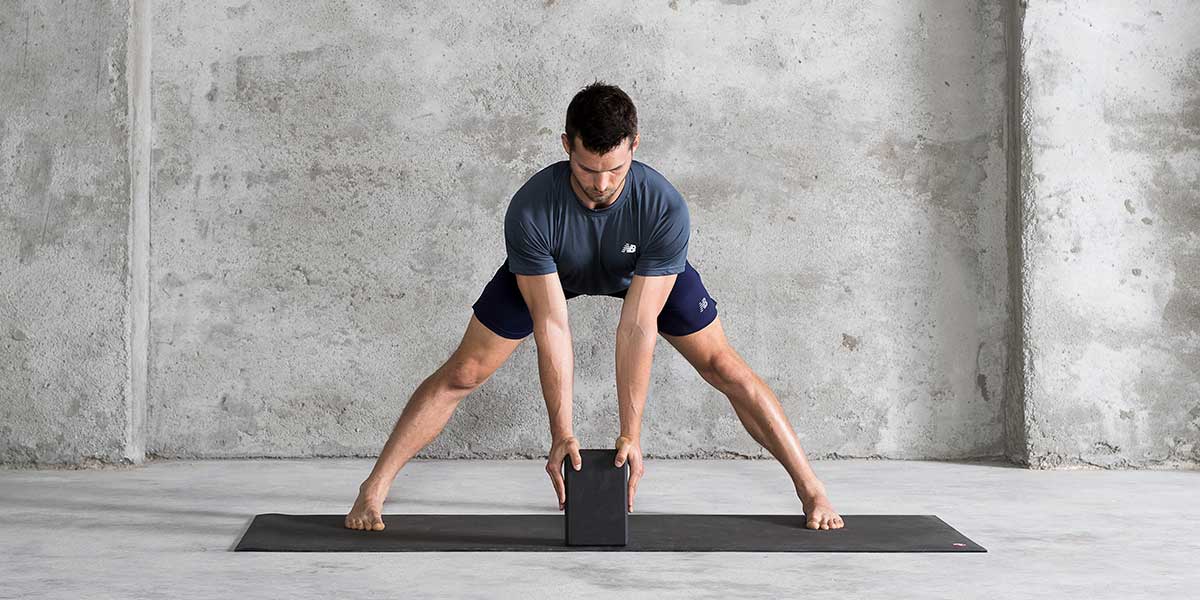
Do I Have to Chant When I do Yoga?
- No, you don’t have to chant. Chanting is common in many yoga classes, but there are plenty of classes that don’t do any chanting. If your goal is to improve your fitness with yoga, and you find yourself in a class that does any more than 30 seconds of “ohming”, I would highly recommend you find another class.
Do I need to Learn Sanskrit Yoga Names?
- No, you don’t need to learn a dead language in order to practice yoga. Many yoga instructors refer to postures in their Sanskrit name. Of course, each of these postures also has an English translation, but many yoga instructors (and yogis) prefer to use the Sanskrit name (though, to my knowledge they don’t speak Sanskrit in other capacity). Some people (myself included), thinks this comes across as pretentious and unnecessary, and for this reason I don’t use any Sanskrit in my instruction.

- There’s absolutely no need to learn Sanskrit to practice the postures with proper alignment – and despite what some yoga instructors may tell you, there is absolutely no difference in the benefit received if you refer to the pose in its English translation instead of using the Sanskrit term.
- If you have an instructor who uses Sanskrit and it annoys you significantly, you can always find another yoga instructor. Again, there are literally thousands of yoga instructors out there, and there’s bound to be one with whom you can relate.
Alright, now that we’ve got that out of the way, let’s talk about the differences in how yoga is practiced by men, and how yoga is practiced by women.
As a man new to yoga, what should you keep in mind?
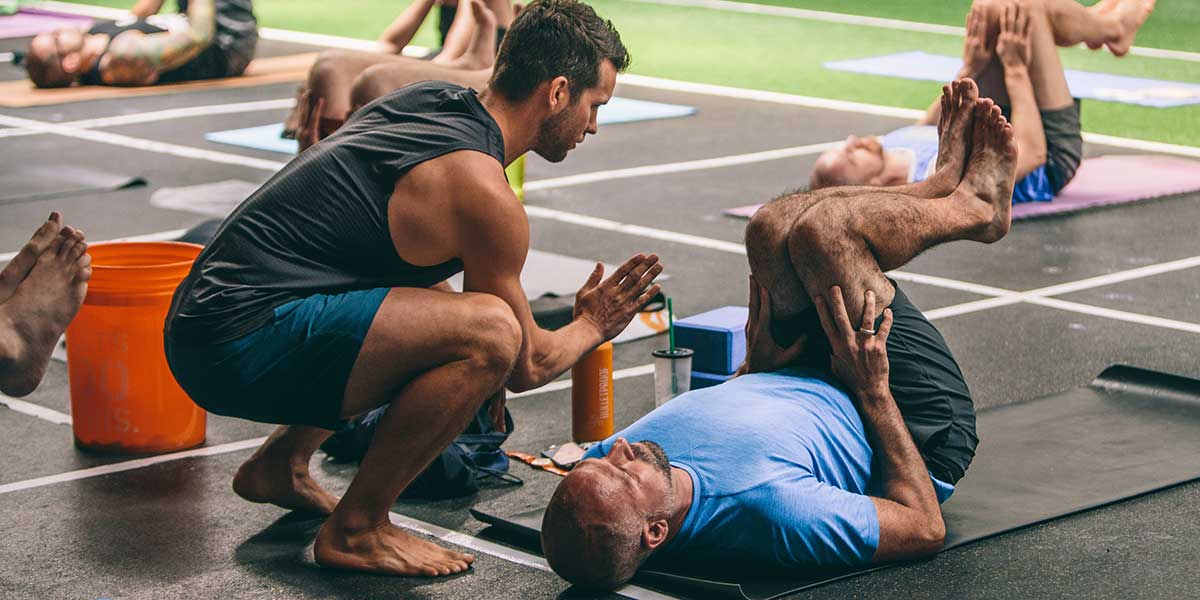
- 1.Yoga is significantly different from other intense, fast-paced workouts.
Yoga is different from typical workouts. Running, weight lifting, and many other intensive forms of exercise involve fast-paced movement – but yoga should not. Yoga is most effective when you practice it with slow, controlled movement. - 2.Don’t push yourself too hard.
In your other workouts, you might be used to pushing yourself. This is usually exactly what makes you stronger, so that makes sense. But in yoga, pushing yourself is a good way to get injured. Instead, focus on building control over your body. You can push yourself to go deeper into your flexibility levels, but don’t push as hard as you can, or you risk tearing a muscle (or worse). Focus on proper technique, breathe, and work on building that connection between your brain and your body. - 3.Like all new things, there is a learning period.
It doesn’t matter if you’ve been hitting the gym every day for 10 years, or you haven’t been to the gym once in 10 years. Because you’re doing something new, it takes time for your body to adapt. When you start beginner yoga for men, you’re not going to be perfect at every pose within a few weeks (or a few months), but despite that, you’ll probably experience noticeable improvements in your fitness, specifically in how you MOVE and how you FEEL, within your first few weeks – as long as you’re following along to a yoga instructor who actually walks you through the proper technique, and you’re not just mimicking the instructor (or the person in the room who looks like they know what they’re doing the best.)
- 4.Flexibility takes a relatively long time to develop.
Strength can be built relatively quickly when compared to flexibility. Within just 4-8 weeks of starting and sticking to a good strength training program, you can expect significant muscular growth. Flexibility, on the other hand, takes longer. If your goal is to significantly improve your flexibility, you’re looking more into the 3-6 month range. And the older you get, the harder it is – but don’t let that discourage you. When you practice an effective form of yoga that focuses on building your active mobility, you can usually expect to FEEL the benefits of improved flexibility within one month; and the more frequently you do it, the quicker you’ll notice it. Just be sure not to push yourself, or you risk tearing or straining a muscle – and that will delay your progress significantly! - 5.Men and women have different levels of strength and mobility. You’ll find that some poses are easier for you, while others are more challenging.
If you’re a guy, avoid measuring your yoga fitness level by comparing yourself to the women you see doing yoga – your bodies are different. It’s not a bad idea to compare yourself to other guys, just keep in mind that trying to do the pose exactly like an experienced yogi does would be like a newbie in the weight room attempting to squat 315 pounds. Yeah, he MIGHT do it. But more likely than not he’s just going to really mess himself up.
Is yoga enough to keep you fit?
This question needs a bit more context. Is yoga enough to keep you fit for… what, exactly?
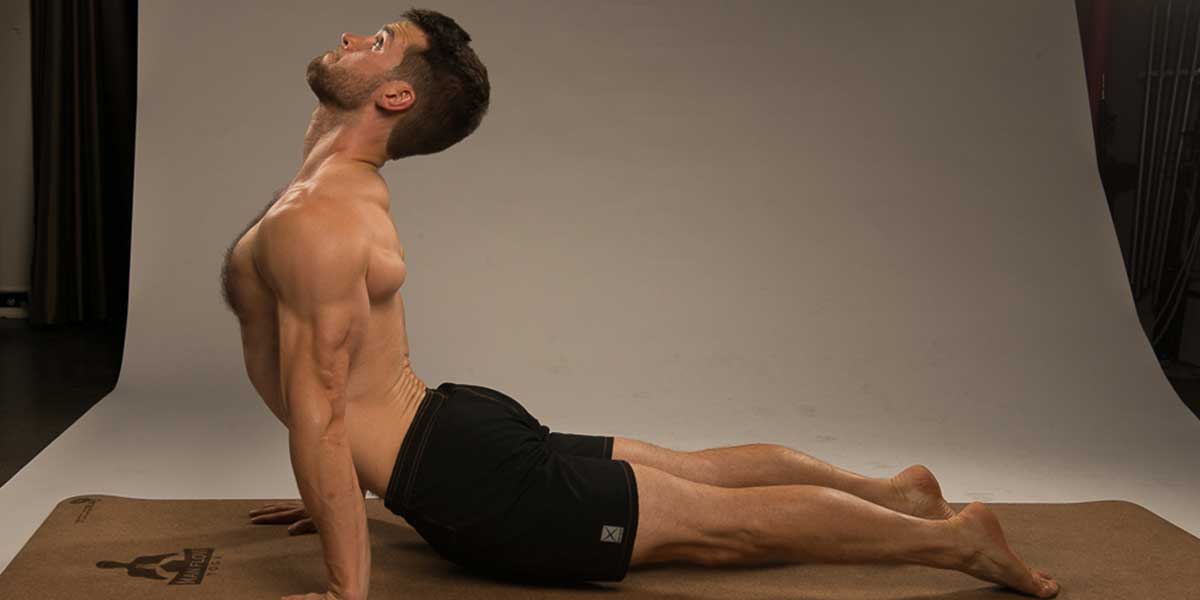
- Healthy, Day-to-Day Strength: For general fitness, yoga is almost enough to keep you fit. Even though is a very effective, full-body workout, you’ll still need to add certain supplementary exercises to target the muscles you won’t hit in a normal yoga workout. This mainly includes the pulling muscles of your upper body (shoulders & upper-back), your biceps (curls, pull-ups), and forearm muscles for grip strength.
- Is yoga considered cardio? Depending on your fitness level, you’ll also want to be sure that you’re doing some form of fitness that addresses your cardiovascular needs. This can involve running or HIIT, but you can also use a lower-impact form of fitness such as rowing on a rowing machine or swimming. But if yoga gets you to the point when you’re huffing and puffing, then you can consider yoga cardio, as well! My only advice here would be to make sure you’re still using proper technique, if you are doing yoga in a way that’s more fast-paced. Many people tend to forget about proper technique when moving more quickly, and this can lead to pain, discomfort, or injury.
- Building significant muscle: If your goal is to build significant muscle, you’ll almost certainly need to do more than just yoga. Yoga does help you build muscle, but it’s unlikely to help you add a significant amount of muscle mass, or help you “bulk”. That being said, yoga is still incredibly helpful for aiding in the muscle-building process, due to the fact that it helps you increase flexibility, decrease your recovery time, and improve balance (not to mention countless other reasons!)
Are yoga for workouts alone enough?
If yoga is your only workout, or you planning on embarking on a yoga-only workout routine, then there are a few things I recommend you keep in mind:
Make sure the yoga you’re doing challenges your strength.
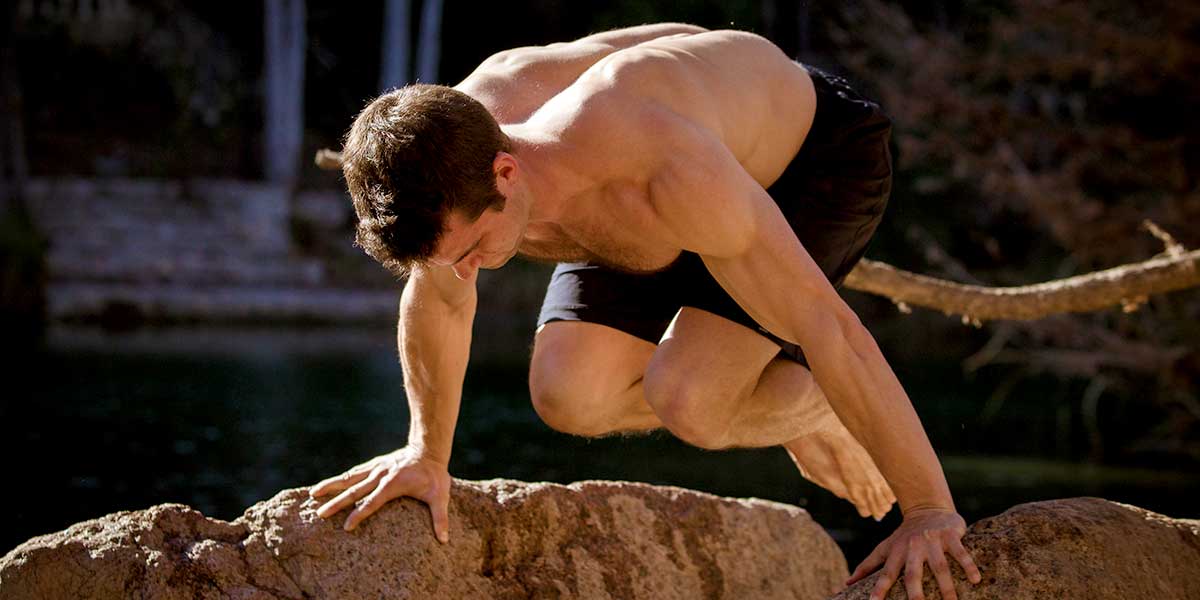
Yoga is great for flexibility and balance, but it’s not always effective when it comes to strength. This really depends on the TYPE of yoga that you’re doing, but it also means that your yoga workouts should challenge you from a strength-perspective. When practicing yoga with the goal of building strength, you should reach that point of fatigue where your muscles start to shake, and you have to give up in order to prevent yourself from falling out of the posture. If you’re able to get through all of your yoga workouts without feeling your muscles “burn”, you’re probably not building significant strength. Balancing postures, going deeper into strength-focused postures, and poses like “crow pose” are great for building strength, which is why they’re a big part of our beginner yoga for men routines.
Do some pulling exercises in addition to yoga.
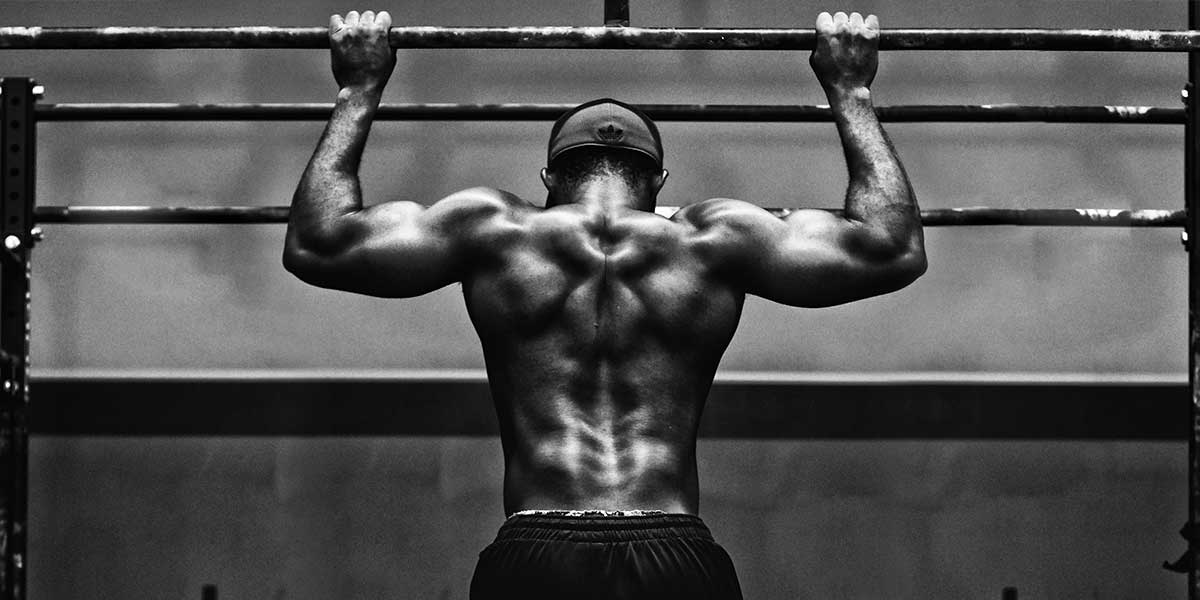
No matter what any yoga instructor tells you, yoga does NOT satisfy all of your body’s strength requirements. One thing that yoga sorely lacks is pulling with resistance. When you don’t have actual resistance like a band, a pull-up bar, or weights, there’s no way for you to build pulling strength. The main pulling exercises I’m referring to here include movements like pull-ups and rows, so you’ll want to be sure you’re doing these at least 2x per week in addition to your workouts. Otherwise, you’ll likely end up with imbalances in your upper body that can lead to shoulder pain or injury.
Work on your grip strength, too.
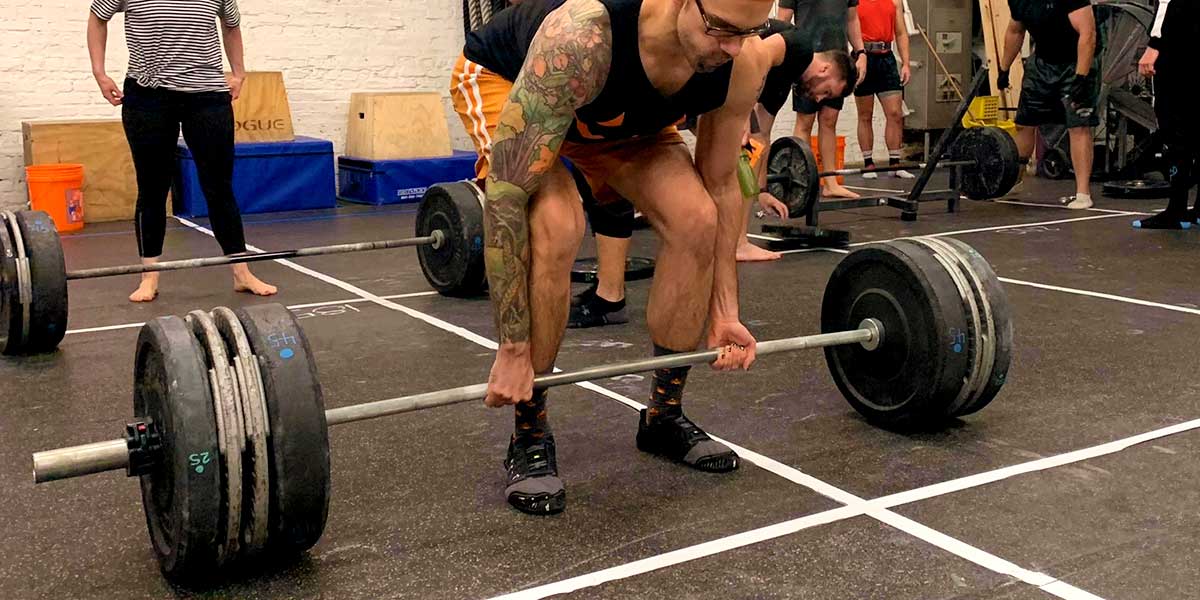
Yoga strengthens your wrists, but it doesn’t strengthen your grip strength, and this is incredibly important when it comes to your overall fitness. Practicing just yoga and not doing grip strengthening exercises usually leads to wrist pain, and this can prevent you from practicing yoga at all. Some examples of grip strengthening exercises include hanging from a pull-up bar, farmer’s carries, and any exercise where you’re holding dumbbells or a barbell. Do these at least 2x per week to keep your wrists happy!
Take care of your heart with cardio.
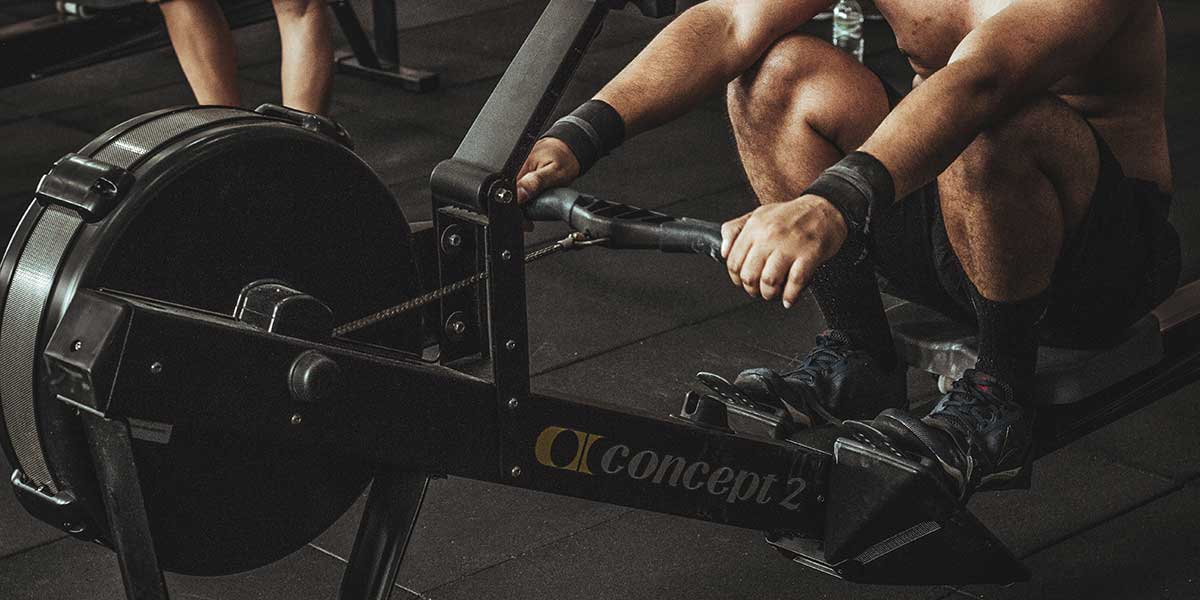
If your yoga workouts challenge you enough to the point where you feel like your heart is pounding out of your chest, then you might not need anything else for cardio. But if you’re not challenging your cardiovascular abilities with yoga, then you should shoot for at least two 20-minute cardio-focused workouts per week. These can be in the form of a brisk walk, running, rowing, swimming, or any other form of cardio suitable for your level of fitness.
Should I do yoga before or after a workout?
- Use yoga to complement, not replace.
If you’re doing other workouts, there’s a good chance that you’re already practicing something for strength, endurance, and cardio. Instead of using yoga to replace your other workouts, use what yoga is BEST for – flexibility, core strength, balance, and recovery. Yoga is good for building strength, but it’s a different kind of strength, and I wouldn’t recommend replacing weight training with yoga. Likewise, yoga can be good for cardio, but running, swimming, or rowing is much better. - Use yoga on alternate days.
Yoga is a great form of active recovery. It’s not as demanding on your central nervous system as other workouts, but it’s still beneficial to help you build strength, flexibility, and balance. Use beginner yoga for men to help break up the intensity of your workout routine. If you lift on Mondays, Wednesdays, and Fridays, then do yoga on Tuesday, Thursday, and Saturdays. If you work out every day, then consider shortening some of your other workouts and giving yourself 20 minutes to do yoga at the end of your shortened workout. - Don’t overtrain.
A lot of people assume that yoga is “just stretching”, but try any strength-focused yoga workout and you’ll quickly realize otherwise. (Need proof? Click here to check out one of my most challenging strength-focused yoga workouts on YouTube.) If you already have a very demanding workout schedule, you might have to sub out some of your existing workouts for a yoga workout, rather than just adding in more yoga. On the other hand, you can practice yoga with a restorative focus (instead of a strength-focus) to make it less demanding on yourself, and help to reduce the risk of overtraining. (How do you know if you’re overtraining? If you have significant joint pain, aren’t sleeping well at night, or are feeling a lack of motivation to stick to your workout schedule, any one of these could be reflective of overtraining.)
How often should I do yoga to see results?
“Results” is relative, but in general, you should be doing yoga at least 3x per week in order to notice a significant improvement. This doesn’t mean that you need to attend three 1-hour yoga classes every week though – you can get the benefits of yoga in just a few minutes per day.
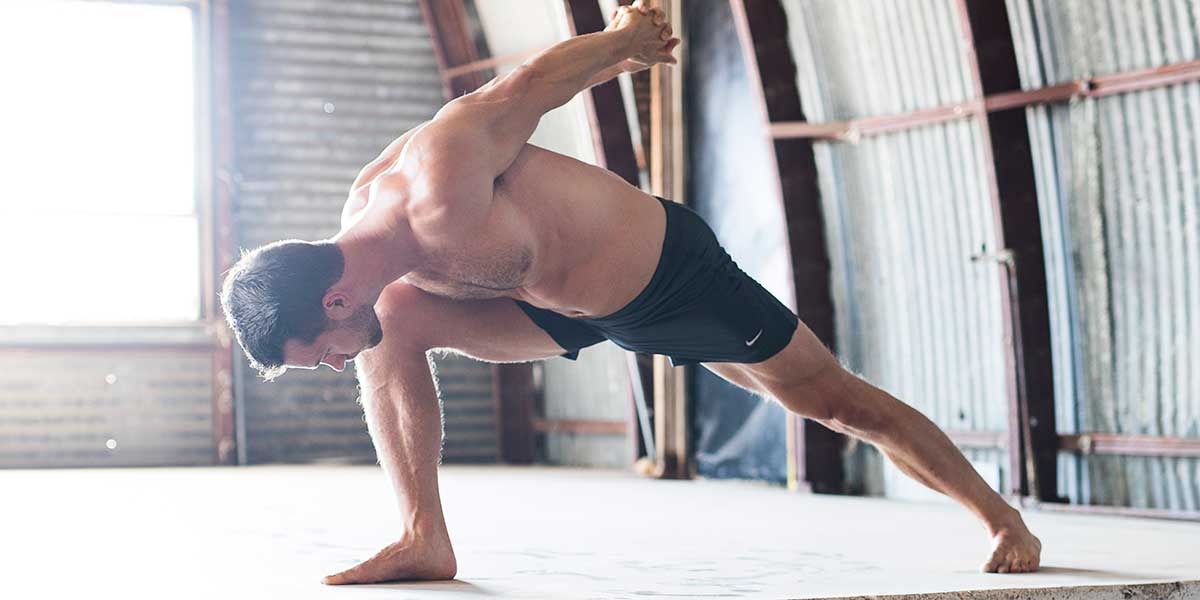
My recommendation is to do at least three 20-35 minute yoga routines every week.
If you want to keep it simple, shoot for 100 minutes per week. You can do these on days you don’t have other workouts, or you can do them at the opposite time of the day as your other workout. (Ex: If you lift weights at night, do yoga in the morning. Or if you go for a run in the morning, do yoga at night.)
If you’d like more specific recommendations on how often you should practice yoga, click here to check out my blog on “How often should you do yoga?“ (Includes recommendations for all-yoga programs as well as integrating yoga with your existing workout program.)
Getting Started With Beginner Yoga for Men
- Yoga gear you’ll need to get started: Equipment & proper clothing.
- How to get started with yoga?
- What are the best types of yoga poses for men?
- The 8 best yoga poses for men (with modifications).
- The best free yoga videos on Youtube.
Yoga gear you’ll need to get started: Equipment & proper clothing.
The cool thing about yoga is that you can do it in just a few square feet of space, with almost no equipment. But, to make it easier on yourself, I do recommend that you at least have the yoga basics. This includes:
- 1.A yoga mat.
A yoga mat gives you a space upon which to practice yoga, and helps you with technique by giving you some straight lines to which you can align yourself. (You can even get one that has alignment markings on it, to help you with proper technique!) If you’re serious about yoga, I would recommend you skip buying a cheap yoga mat, and go straight for a high-quality one.I couldn’t find a yoga mat that satisfied the needs of my online community, so I went out and designed my own. This mat is extra thick, 20% wider & longer, and has a no-slip cork surface to help prevent sliding when you start to sweat. You can learn more about my luxury cork yoga mat (and get your own!) by clicking here.
Alternatively, if you don’t have (or want to buy) a yoga mat, then you can use a large towel.
- 2.A yoga strap. The strap is an essential tool for yoga. It helps you modify postures if you’re not as flexible, and it also makes restorative stretches more effective. Yoga straps are very inexpensive. If you don’t want a yoga strap, you can easily use a belt or a dog leash (as I have on many occasions) instead.
- 3.2 cork yoga blocks. Yoga blocks are another essential tool for yoga. These help with practicing proper technique, increasing core and hip strength, and adding resistance for more challenging variations. I recommend cork blocks because they are more stable, provide better support, and also weigh enough to be resistance tools. We’re currently in the process of launching our own cork yoga blocks, but until then you can get a pair from amazon.
You won’t need to worry about shoes or socks in yoga. It’s best to practice barefoot. If you need better grip, you can use a yoga towel or a yoga mat with a no-slip or cork surface.
If you want more tips on yoga gear, Click here to check out a guest post written by Rhone on our blog.
How to get started with yoga?
My recommendation: follow a yoga program focused on your goals. How do you do this?
- 1.Find an instructor you like. If you’re going to be following an instructor’s every move and directive, it’s a good idea to make sure you like them first. YouTube is a good way to test out a variety of instructors and figure out which one fits best for you. If you want to do yoga in person, I would sign up for as many free trials as you can at local yoga studios and then try out the instructors who appeal to you. To get an instructor who’s effective at improving your fitness, you should find one who:
- Focuses on proper technique
- Explains how each exercise/posture improves your fitness
- Provides modifications for different fitness and flexibility levels
- Understands anatomy and fitness
- 2.Choose a program relevant to your goals. Many yoga workouts and programs are general purpose. This is helpful, but if you want to be sure you’re not wasting your time, then you should make sure that what you’re doing helps with your goals. Also, if your goal is to rehabilitate your back with yoga, then jumping into a general yoga program might be the worst thing you can do. In short, it’s important to choose a program that focuses on your goals so that it’s (1) effective, and (2) safe. Most yoga studios don’t provide structured programs. They provide general classes that address a variety of needs. If you want a program, you should choose an online program that addresses your specific goals.We have over 40 workout programs in the Man Flow Yoga Members’ Area (inclduing a beginner yoga for men program), with a variety of goals and fitness/yoga experience levels to make sure you find the appropriate program for you.
Once you’ve got your yoga program, I recommend doing the following:
- 1.Create a 1-month plan, and stick with it. If you’re following along to a structured program, you should already have a recommended or set workout schedule. Use a calendar, write it in your workout journal, or create reminders on your phone to make it easy to follow your set schedule of workouts. One month is long enough to know whether or not it’s working, because you’ll usually be able to notice results (in how you move or feel on a daily basis) by then.
- 2.Evaluate every 2 weeks. Within 2 weeks, you should know whether or not a workout plan is appropriate for you. It’s better to re-evaluate and create a less intensive schedule for yourself than it is to stick with an unmanageable workout routine. Re-evaluate your schedule every 2 weeks as a way of staying aware of your target consistency, and to make sure you have a program that works for you.
- 3.Keep a workout log. Last but not least, I recommend keeping a workout journal or log of some sort. This allows you to track whether or not the program is working, and to reflect upon improvements as they come up. A workout journal is also a physical representation of the hard work you’ve put into your fitness, and helps motivate you to be more consistent. For more tips on keeping and maintaining a workout log, click here!
Note: Searching for workouts vs. following a program
You’ll want to follow a yoga program, as opposed to selecting random workouts on YouTube, because the added structure makes it easier to stick to it. YouTube is great for finding a yoga instructor you like, but when it comes to following a program, there’s not a lot of structure.
What are the best types of yoga poses for men?
Is there any difference between a yoga pose that’s good for men and a yoga pose that’s good for women? There are similarities and differences. To answer this, I would say a yoga pose is more effective for men when it does 3 things:
- Focuses on common physical weaknesses in men (core & hips)
- Addresses the differences in hip flexibility men vs. women
- Provides modifications for inflexible men (who are usually much less flexible than women in all areas)
The 8 best yoga poses for men (with modifications)
Most of the poses below and their descriptions are taken from my book, Yoga Fitness for Men, which has been published in 4 languages and has sold over 35,000 copies since being released in May 2019. Re-used with permission from Dorling Kindersley Publishers and Dennis Burnet Photography.
1. Boat Pose
Why it’s good for you: This very challenging posture works your transverse abdominals—the deep core muscles that keep you upright, help you balance, and enable you to do just about any movement with safe and proper technique. Use this pose to strengthen your core and improve muscle efficiency in full-body movements.
Pose technique:
- Sit on the floor, bend your knees, and place your feet on the floor, with your heels a few inches in front of your hips.
- Lightly grip your knees with your hands, sit as upright as possible, and lean back slightly.
- Keeping your chest lifted and your torso still, squeeze your hip flexors and abdominal muscles toward each other to engage core.
- Let go of knees, and reach arms forward and up, palms up.
- Continue to firmly engage your abdominal muscles and hip flexors, and slowly lift feet off the floor and straighten legs. Pull sternum toward the ceiling while keeping spine neutral.
- Hold the posture, inhaling as you lengthen the spine, and exhaling as you tighten the core.
- Hold for at least 20 seconds, and up to 90 seconds.
Modification:
- Men often rely on their upper bodies instead of their hips and core. Their weaker than average cores and hips cause them to round their back, and boat pose turns into more of a crunch exercise. To counteract this, start with your hands lightly gripping your knees, and focus on lifting your chest lightly up and back in order to make your spine straight. If can do this while keeping your back flat, lift your shins to be parallel with the ground.
2. Lizard
Why it’s good for you: Why it’s good for you: This deep-lunge stretch opens the hips, releases tension in your back, and decreases soreness in the lower body. Lizard helps speed up recovery and reduces the risk of injury in the hips, thighs, knees, and lower back. It also helps reverse the negative effects of prolonged sitting or inactivity, so it’s an important part of yoga for men.
Pose technique:
- Start in a low lunge position, with your back knee down, and your knee over your ankle in your front foot.
- Shift you front foot forward and to the left a few inches until you feel a deep stretch in the front of your back hip.
- Inch your back foot backwards to widen your lunge and deepen the stretch.
- Lift your chest. Maintain a flat or slightly arched back.
- Hold the posture, inhaling as you lengthen and lift the spine, and exhaling as you sink hips deeper.
- Hold for at least 45 seconds and up to 2 minutes. Repeat both sides.
Modification:
- Men have tighter hip muscles, so we’ll want to modify this stretch to account for the lack of hip flexibility. Bring your legs closer together, and don’t worry about getting your hips as close to the ground. Place a block inside your front foot, and use that to keep your chest upright while holding this stretch.
3. High Lunge
Why it’s good for you: No matter your fitness level, try to perform this lunge every single day. This full-body exercise combines hip mobility, core strength, balance, and body control to reduce your risk of injury in the knees, ankles, hips, and spine. This also builds lower-body strength and endurance for improved athletic performance.
Pose technique:
- From the top of your mat, step one foot back into a lunge position.
- Bend your front knee until the shin is perpendicular to the floor. Press the heel of the front foot into the floor to engage your hip muscles; squaring your hips.
- Squeeze your legs toward each other to engage inner thighs and core.
- Reach your arms straight overhead, keeping the ribs drawn in to prevent chest from splaying open. Keep your butt under your torso, lower-back flat.
- Hold the posture, inhaling as you lengthen the spine and maintain the stance, and exhaling as you sink deeper into the lunge.
- Hold for 45-90 seconds. Repeat both sides.
Modification:
- Men have tighter hips, and if you spend your day at a desk, they’re going to be even tighter. To address this, bring your feet closer together. Make sure you keep your butt directly under your shoulders without arching your lower-back. You’ll also want to soften your knee and bend your back leg, as this reduces the amount of hip flexor flexibility required for this posture.
4. Pigeon / Reclined Figure 4
Why it’s good for you: Pigeon stretches your glutes for faster muscle recovery, releases the lower back, and improves hip mobility. This stretch is one of the most important you can do for your back and your hips, leading to better jumps, sprints, and squats, and helping your back feel great throughout the day.
Pose technique:
- Start in a tabletop position on all fours with shoulders over your wrists and knees under your hips. Untuck your feet.
- Slide your left knee up to your left hand, and bring the left foot across your body to rest between your right hand and right knee.
- Turn the left hip outward so the inner thigh faces up, and outer thigh faces down.
- Extend toes of right foot back as far as possible, releasing hips toward the floor as you do so.
- Rest hands a few inches in front of the bent leg, using your upper body to help square the hips straight forward.
- Hold the posture, inhaling as you lengthen the chest forward, and exhaling as you sink the hips closer to the floor.
- Hold for 60 – 120 seconds. Repeat both sides.
Modifications:
- Pigeon is often too difficult for men who have no yoga experience, so it’s a much better idea to start off with a reclined figure 4. This stretch has almost identical benefits, but it’s much more appropriate for men’s beginner yoga, where people may have tight hips or who haven’t done yoga before. To do a figure 4, lie on your back and cross your right ankle over your left thigh. Grab the back of your left thigh with both hands, and slowly bring your thigh toward your body until you feel a stretch. Focus on external rotation of the right hip here by turning your knee to face out. Avoid pressing your right knee forward. Make sure to do both sides.
- If you want to practice pigeon, the other modification is to use a prop under your hip, to bring the ground higher up. You can use a pillow, a folded blanket, or a sweatshirt for this. Simply place the prop under the front thigh, allowing your hips to rest a few inches higher off the ground.
5. Standing Wide-Legged Forward Fold 2 (with Strap behind back)
Why it’s good for you: This position stretches your inner thighs, relieves tension in your spine, and helps prevent knee injuries; while also stretching your shoulders, strengthening your upper-back, and opening your chest. It’s a great full-body posture to target multiple areas of mobility and strength.
Pose technique:
- Stand with your feet 4 to 6ft (1.25–1.75m) apart, and slightly turn your toes inward. Engage the arches of your feet, and press into outer edges of feet.
- Engage your quadriceps and squeeze your inner thighs toward each other.
- Interlace your fingers behind your back, making sure to keep your chest open, and shoulder blades pulled together & down toward your hips. Bend your elbows as much as you need to in order to keep your chest open and avoid internal shoulder rotation.
- Hinge at the hips and bring your chest forward and down, maintaining a flat back.
- Squeeze hip flexors and core toward each other, and fold forward as far as you can while keeping the back flat. Keep your fingers interlaced, arms lifting away from your back with your chest remaining open.
- Hold for 45-90 seconds.
Modifications:
- Men have tighter hips and tighter shoulders, especially if you’re living the desk life. To address this lower level of hip flexibility, bring your legs closer together and bend your knees significantly. For your shoulders, you’ll want to hold a strap behind your back, palms facing your body (externally rotated).
6. Warrior 2
Why it’s good for you: Why it’s good for you: This is an essential lunge posture that builds strength and mobility in the hips, ankles, and core. It’s useful for office workers to combat the negative effects of sitting, as well as for athletes to improve hip mobility for more agile change of direction and injury prevention.
Pose technique:
- Stand in a wide-legged stance with your feet 4 to 5ft (1.25–1.5m) apart.
- Turn front foot to face straight outward, and bend the knee until it is directly over your ankle.
- Place hands on hips to ensure hips are level. Squeeze legs toward each other to engage inner thighs.
- Keeping your torso over your hips, extend your arms to the sides, palms facing down, and press the fingertips of your opposite hands away from one another.
- Turn your head to gaze down your left arm. Lift ribs away from hips, and maintain tension in legs.
- Hold the posture, inhaling as you lengthen the spine and grow taller, and exhaling as you sink the hips deeper and engage core.
- Hold for 30-90 seconds. Repeat both sides.
Modifications:
- Due to hips that did not evolve for child birthing, you’re going to want to bring your legs closer together if you’re an inflexible guy. It also helps to stagger your stance slightly by making your back foot is closer to the side of your mat (the direction your torso is facing) than the front one.
7. Cobra
Why it’s good for you: This is one of the best spine and core strengthening postures in yoga. Cobra also improves lower-body and hip strength, builds muscle in your back, and helps prevent injury. It’s an absolutely essential posture for people who sit often during the day, as well as for athletes to improve overall performance.
Pose technique:
- Lie on your stomach, and place your hands under your shoulders with your elbows pointing straight back, close to your sides. Spread your fingers wide and relax palms under your shoulders.
- Engage and rotate thighs inward so kneecaps point straight down and all toes are touching the floor.
- Squeeze your big toes, ankles, knees, and inner thighs toward each other.
- Press your pelvis and tops of feet into the floor.
- Inhale as you use your core (not arms) to lengthen spine forward and slightly lift your chest away from the floor. Press the crown of your head away from shoulders, looking forward once your neck has lengthened.
- Pull shoulder blades down and toward each other, squeeze elbows to sides, and use your hands to pull (not push) your body forward and up.
- Hold the posture, inhaling as you lift slightly higher, and exhaling as you increase engagement and maintain height.
- Hold for 20-45 seconds.
Modifications:
- Most men aren’t as mobile in their spines, so don’t worry about lifting your chest very high off the ground. The good news is that the benefits of this pose really occur in the first few inches of the lift. Avoid using your arms to hold your body up.
8. Airplane
Why it’s good for you: This balancing posture provides a deep hamstring and calf stretch, while improving strength and mobility in your core and hips. It’s great for your knees, ankles, and spine.
Pose technique:
- Start in a high lunge position (knees off the floor) with your hips squared forward, arms along your side.
- Shift the weight into your front foot, lean forward while keeping your chest upright, and then lift your back leg off the ground.
- Balance on your front leg while extending the back leg straight back, hips remaining squared forward.
- Bend your front knee as much as needed to keep your back flat. Keep your arms along your side.
- Keep your chest pulling forward and up to avoid rounding in your spine. Core remains engaged, chin pulled in toward your throat.
- Hold for 30-60 seconds. Repeat both sides.
Modifications:
- Men are notorious for tight hamstrings in yoga. That’s why it’s easier for women to touch their toes than it is for men. To address this, you can use blocks to help bring the ground up to you. This makes it so you can still get a great stretch in your hamstrings, but without the added stress on your spine of a c-shaped hump in your lower-back.
Want to watch a video walkthrough of each pose?
This video is from my YouTube channel, and includes a step-by-step technique walkthrough of each posture, along with tips of common errors to avoid, modifications for if you’re inflexible, and much more information!!
Not subscribed to my YouTube channel yet? Click here to subscribe!
The best free yoga videos on Youtube.
Want to try a workout? You don’t need any special equipment to get started, and if you work out regularly, you’re probably ready to jump straight into a workout – even if you’re brand new to yoga, and you’re as inflexible as the tinman.
The important thing is that you find a workout that is focused on the technique, so you make sure you’re doing the postures effectively – not to mention safely. If you don’t have a yoga mat, use a towel. Instead of a yoga block, use a stack of books. For the strap, use a belt or dog leash.
Ready to try?
Here are 3 of the most popular FREE yoga workouts for men on YouTube:
10-Min Full Body Beginner’s Yoga for Men to Increase Mobility, Muscle Activation, and Balance
Yoga for Men Series – Workout #2
15-Minute Yoga for Confidence & Energy
Next Steps – Beginner Yoga for Men and how to find the right yoga teacher/program
How do you go about finding a beginner’s yoga program for men online? It should fulfill at least 5 requirements:
- 1.Assume the user has no yoga experience – you shouldn’t have to know yoga pose names, speak Sanskrit, or have any yoga experience to participate
- 2.Be taught by somebody who normally teaches men – who understands the difficulties that typical guys face when practicing yoga, including differences between men and women
- 3.Teach the proper technique, including: what each part of the body should be doing, what you should and shouldn’t feel, the target area(s) of the posture, and anything else that’s relevant to practicing the exercises as safely and effectively as possible
- 4.Include modifications for men, so that inflexible guys will still get the same benefits as someone more flexible
- 5.Go at a easy-to-follow, manageable pace that allows beginners to follow along without getting lost or having to look up every few seconds
Most of the programs that I create are beginner-friendly, but there are 3 in particular that I recommend for people new to yoga (and Man Flow Yoga). If you want to feel noticeable improvements in as little time as possible, while learning yoga and having fun, here are programs I’d recommend for you:
Bulletproof your Back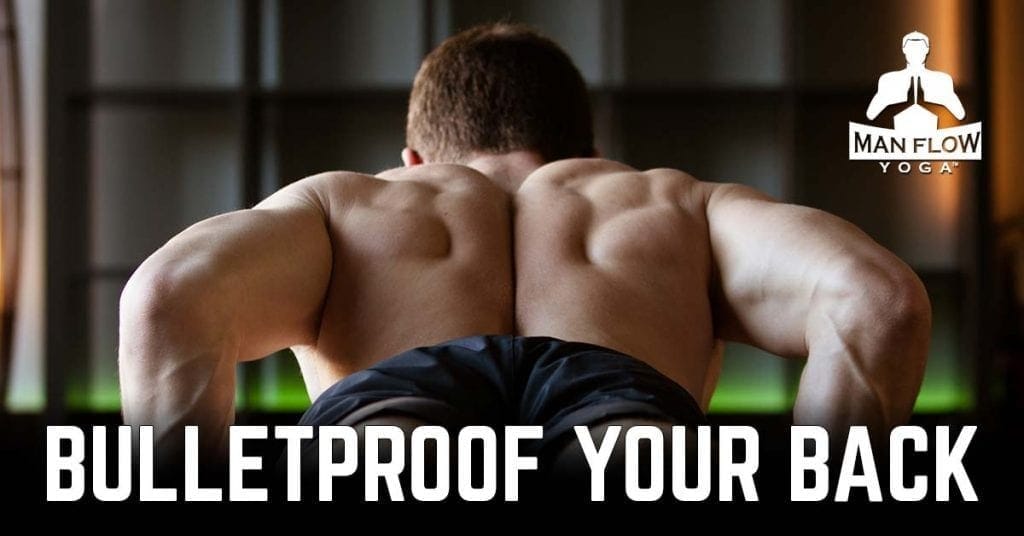 |
MFY Guyoga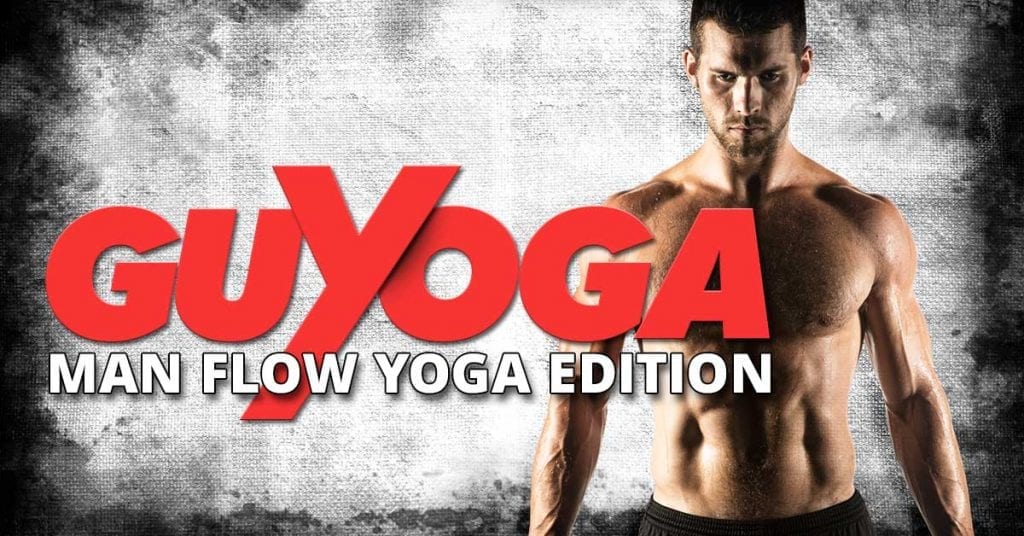 |
Strength Foundations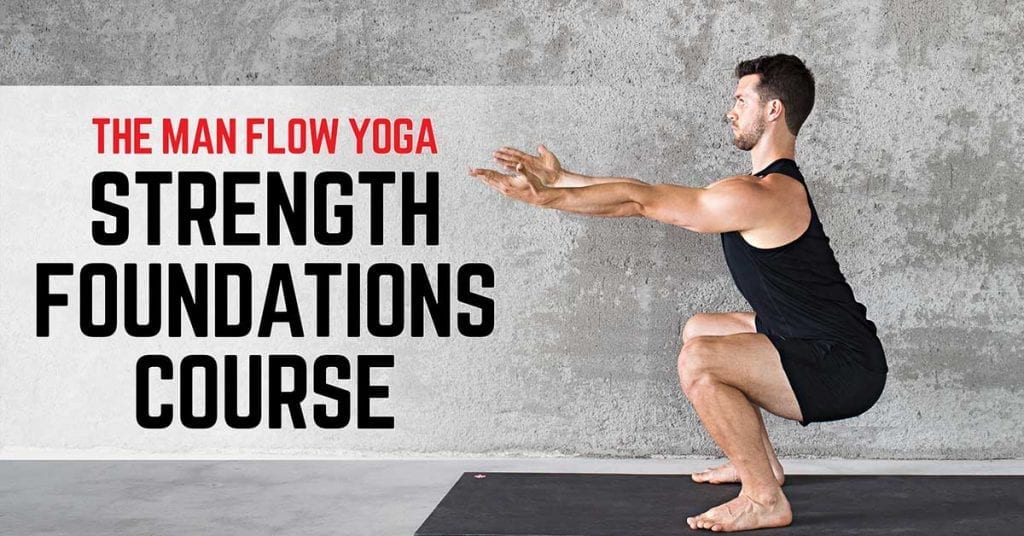 |
|
| Intensity | |||
| Intensity | Low Intensity | Low-Medium Intensity | Medium-High Intensity |
| Time Commitment | |||
| Time Commitment | 10-20 Minutes Per Day, 5x Per Week | 20-25 Minutes Per Day, 3-6x Per Week | 30-40 Minutes Per Day, 3-6x Per Week |
| Goal | |||
| Goal | Get rid of chronic back pain, strengthen your core, improve hip mobility & strength, and establish a baseline of fitness. | Learn yoga while building strength, flexibility, and balance. Understand proper technique, target areas, benefits, and modifications for beginners. | Build a solid foundation of strength and mobility, for functional fitness, strength training, swimming, running, cycling, or active lifestyles. |
| Focuses On | |||
| Focuses On | Strength and flexibility in your core, hips, and spine. Targets the root causes of back pain. | Full-body, flow-based yoga workouts to build strength, flexibility, and balance. | Full-body muscle activation, strength & mobility to improve overall strength, prevent injury, and address muscular imbalances. |
| Fitness Experience Required | |||
| Fitness Experience Required | None | Minimal | Minimal |
| Yoga Experience Required | |||
| Yoga Experience Required | None | None | None |
You don’t have to use Man Flow Yoga to get started, but I think it’ll be a lot easier if you do!
You’re welcome to take the lessons and information covered here into any other yoga workout or studio with you.
Thank you for reading my guide to yoga for men!
Leave a comment below if you have any questions, and share this article with a friend if you found it helpful.
Want to get started?
Further Resources:
Want more? I’ve listed some additional resources below:
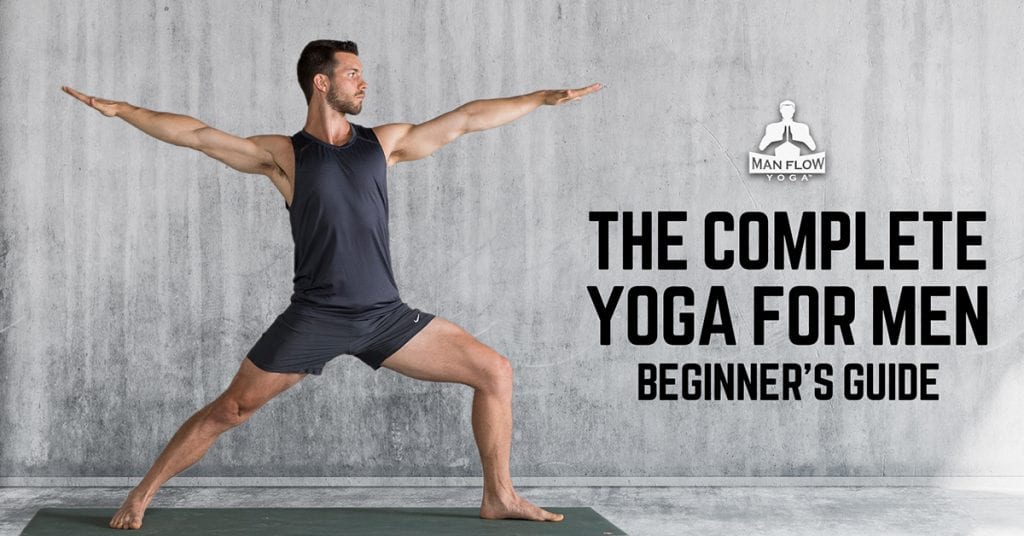
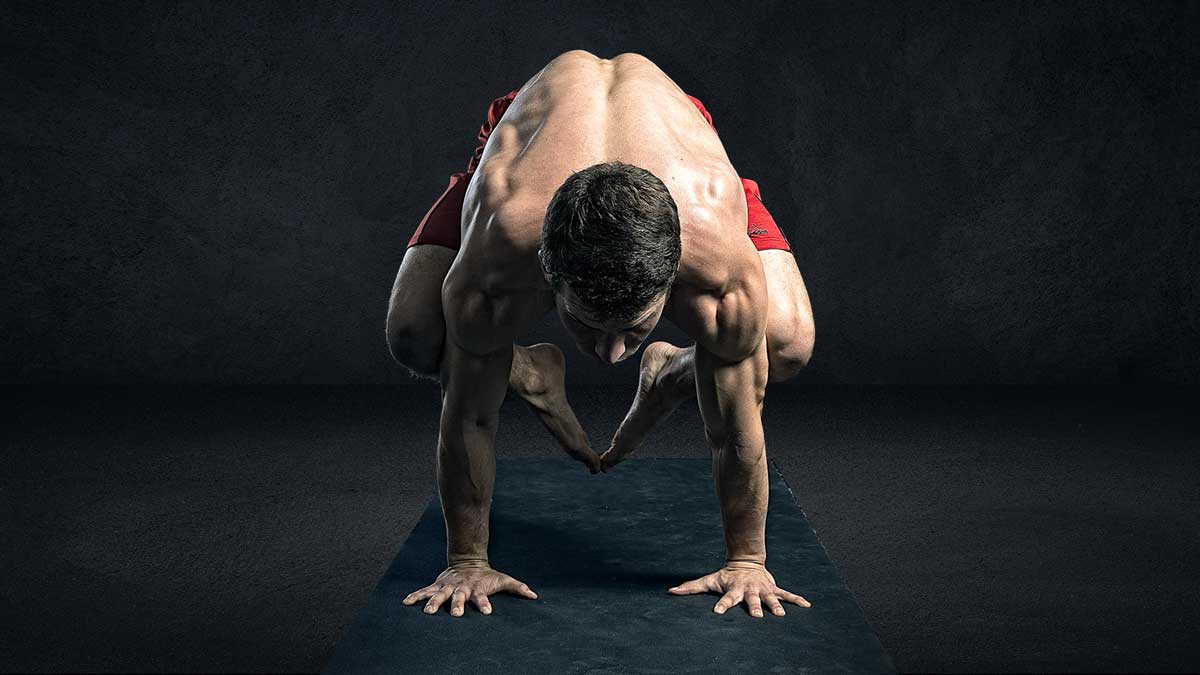
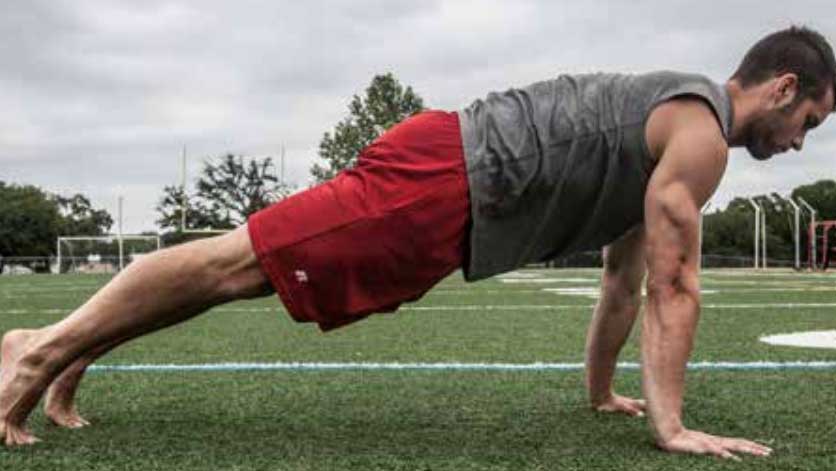

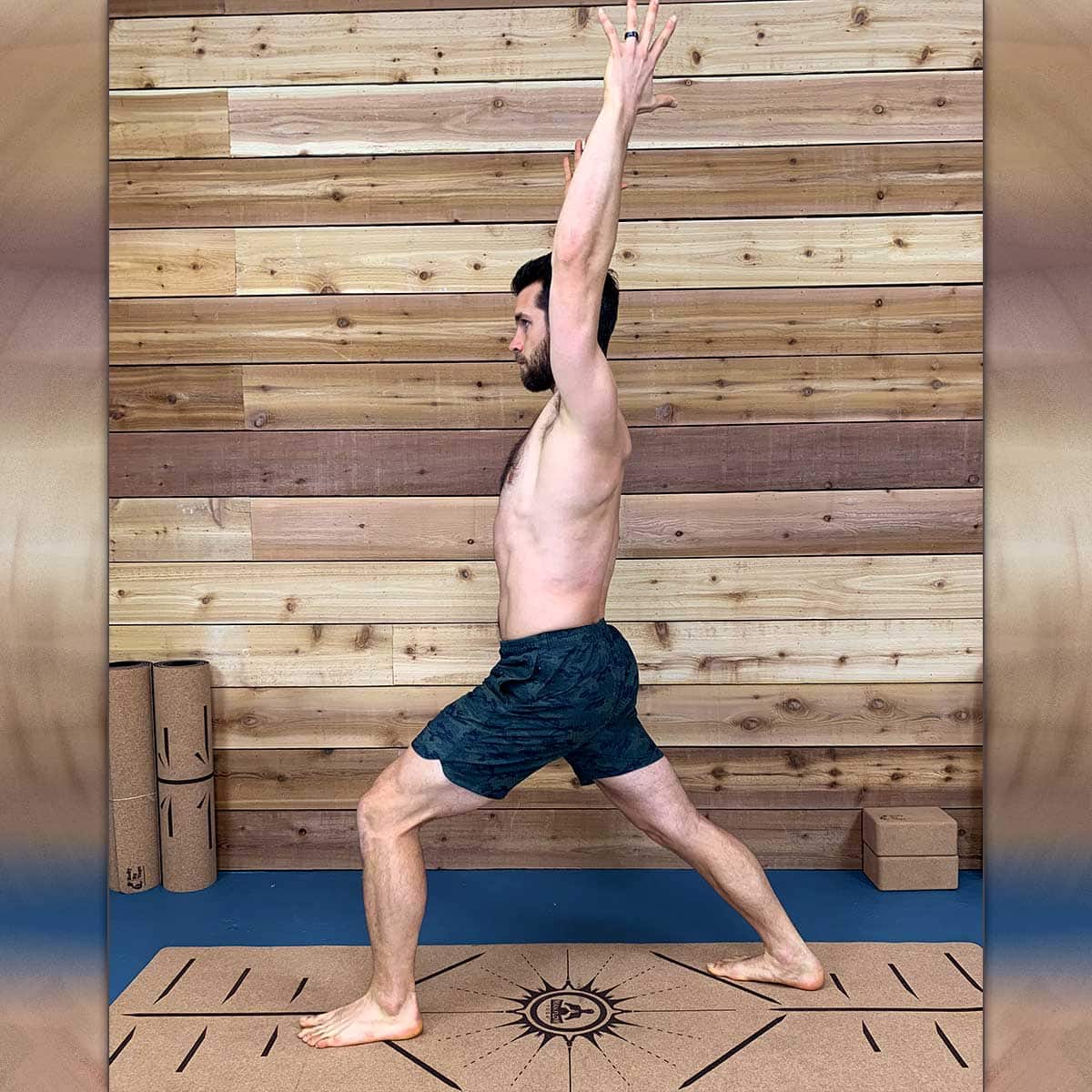
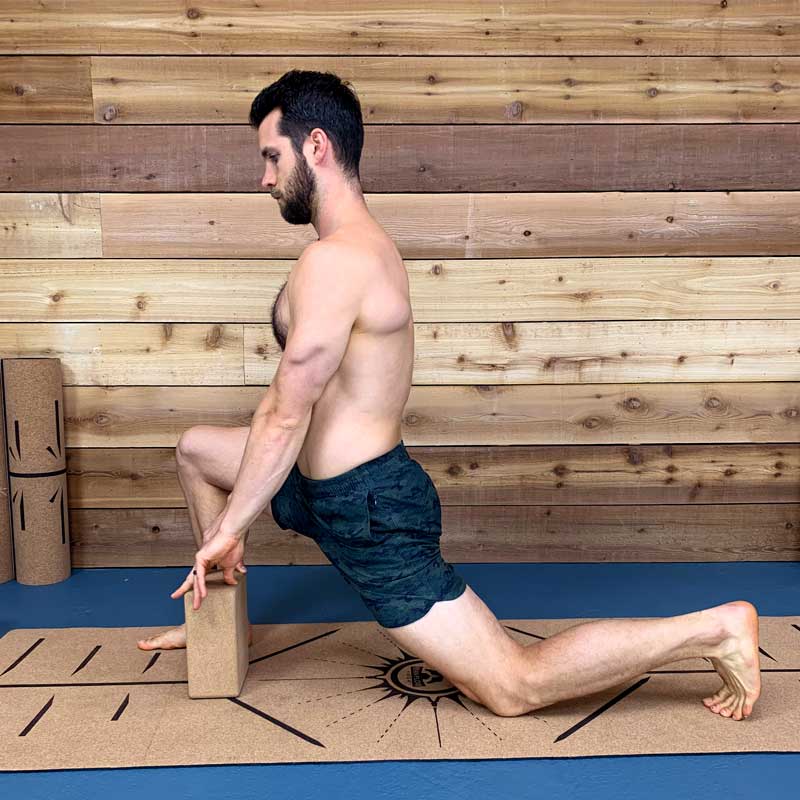
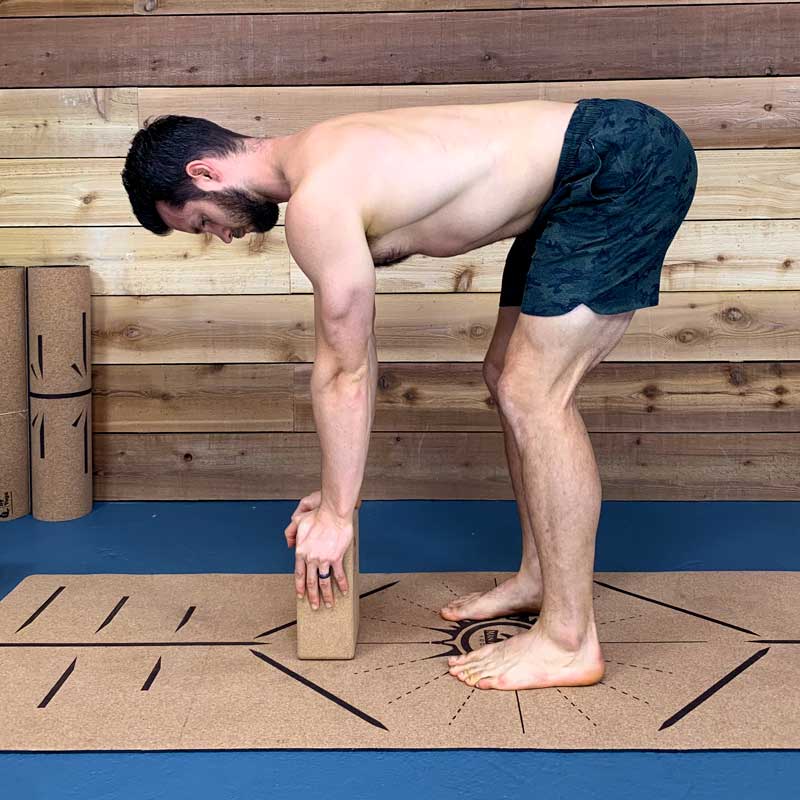
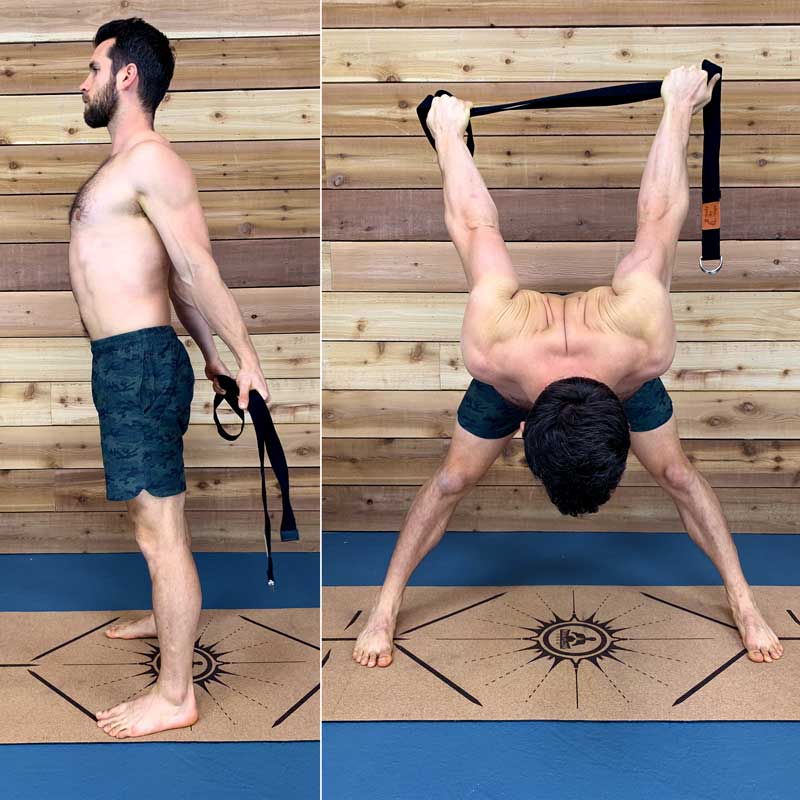
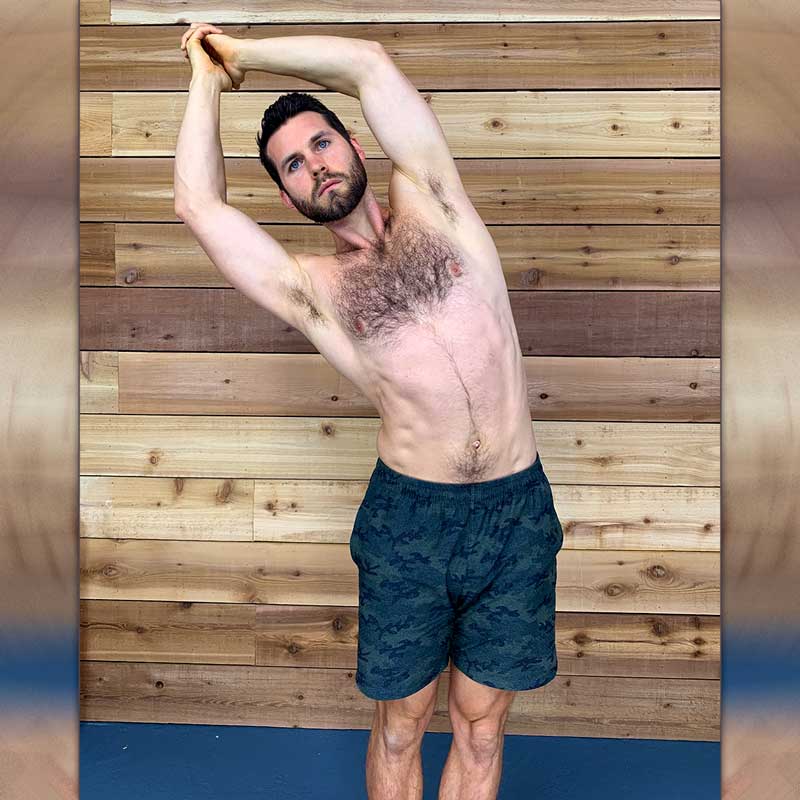
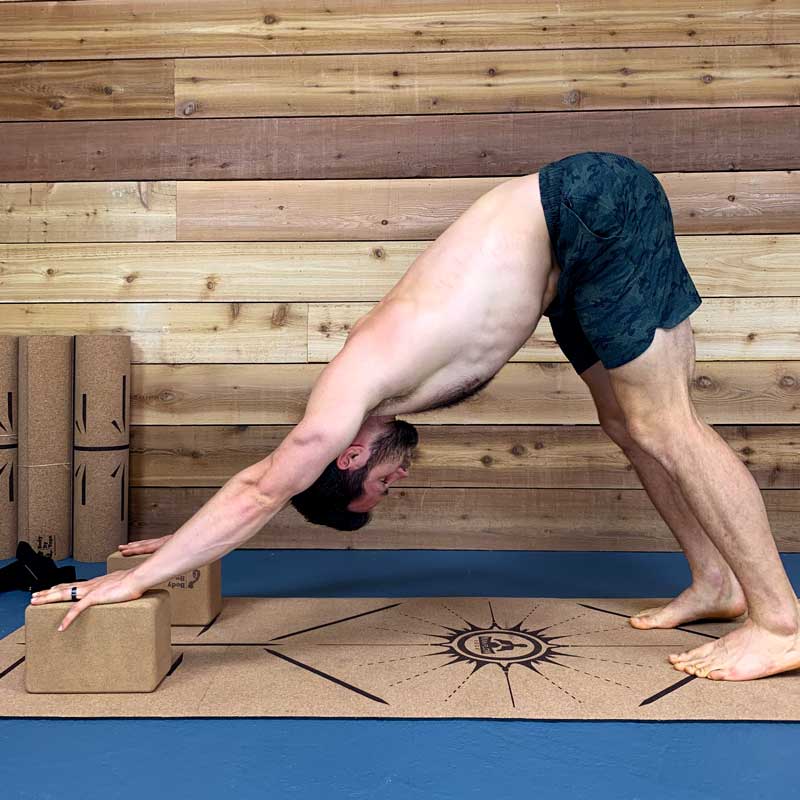
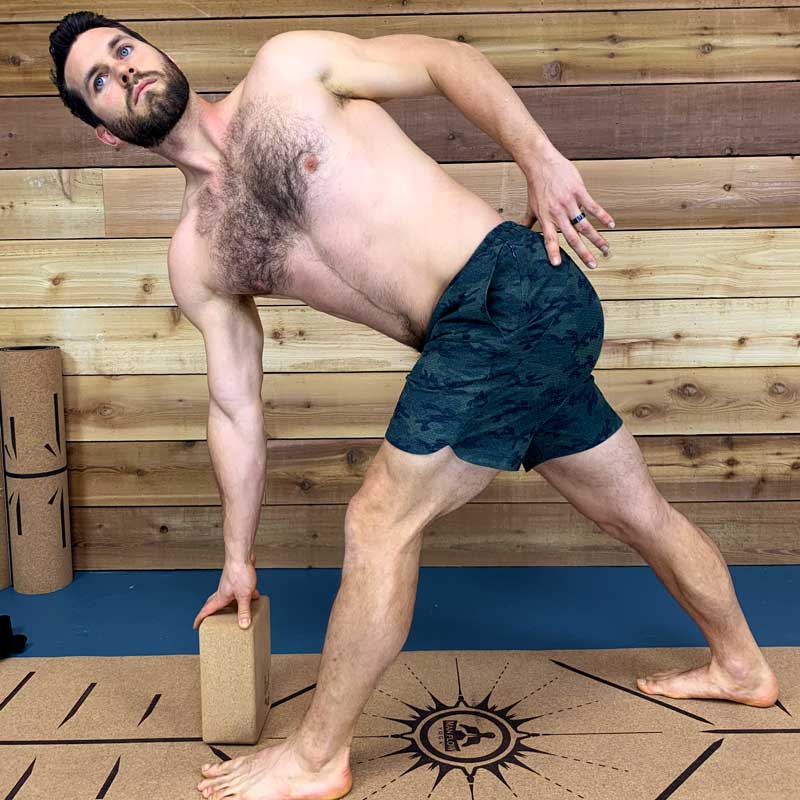
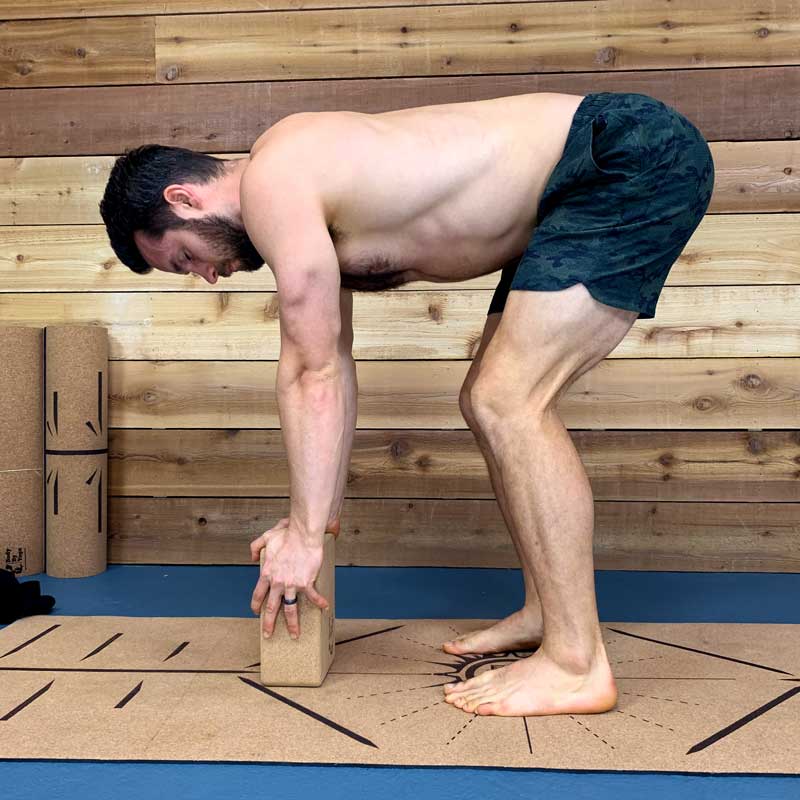

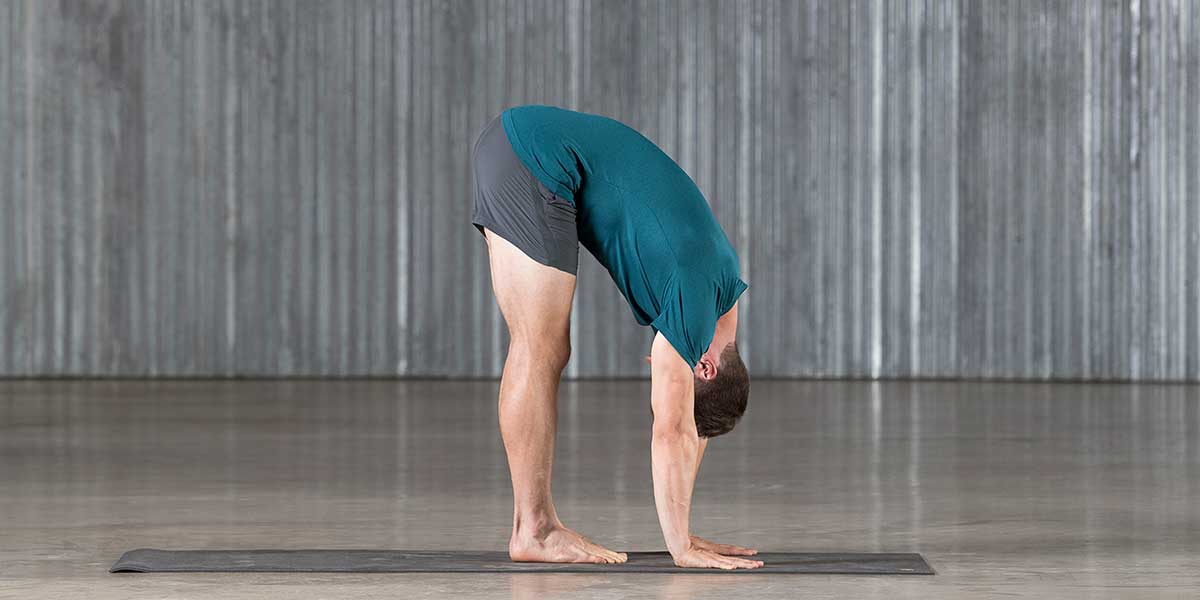
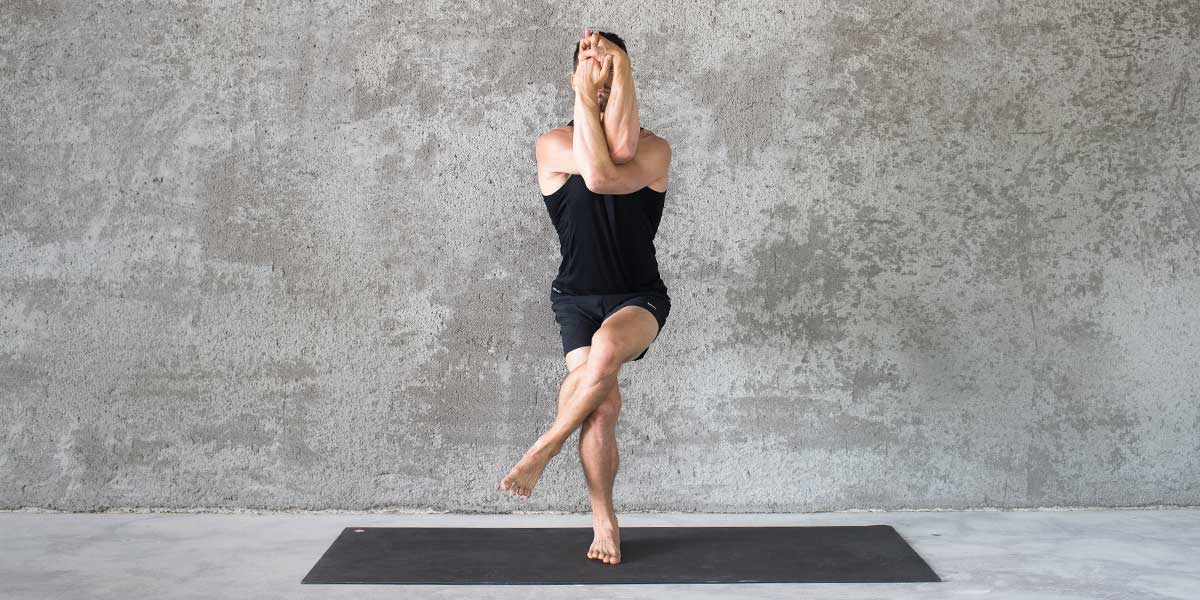
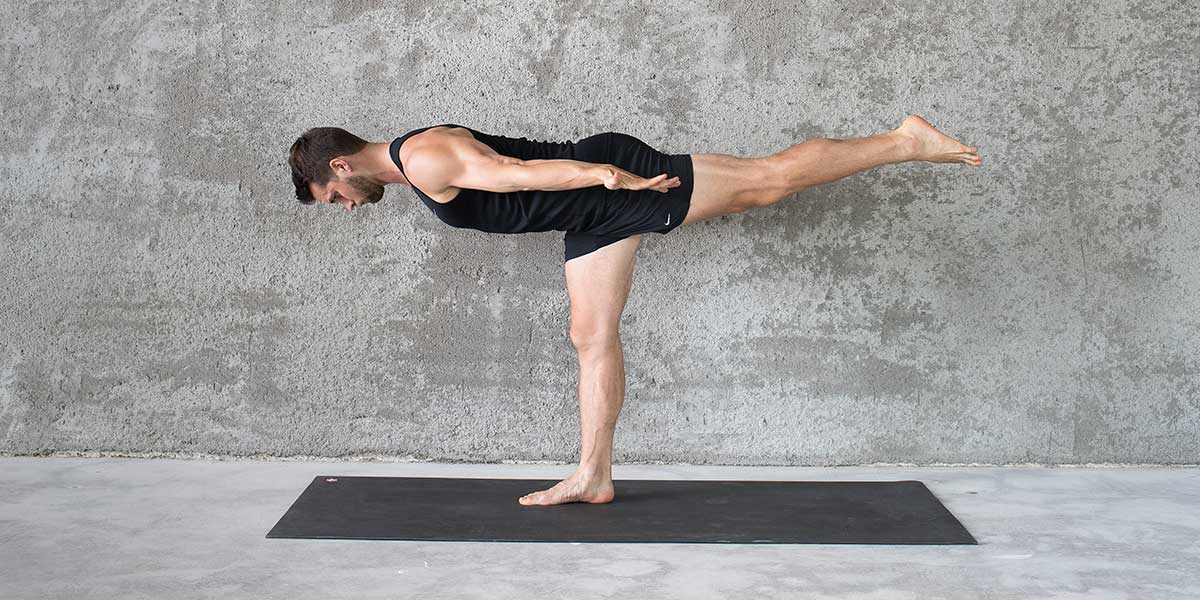
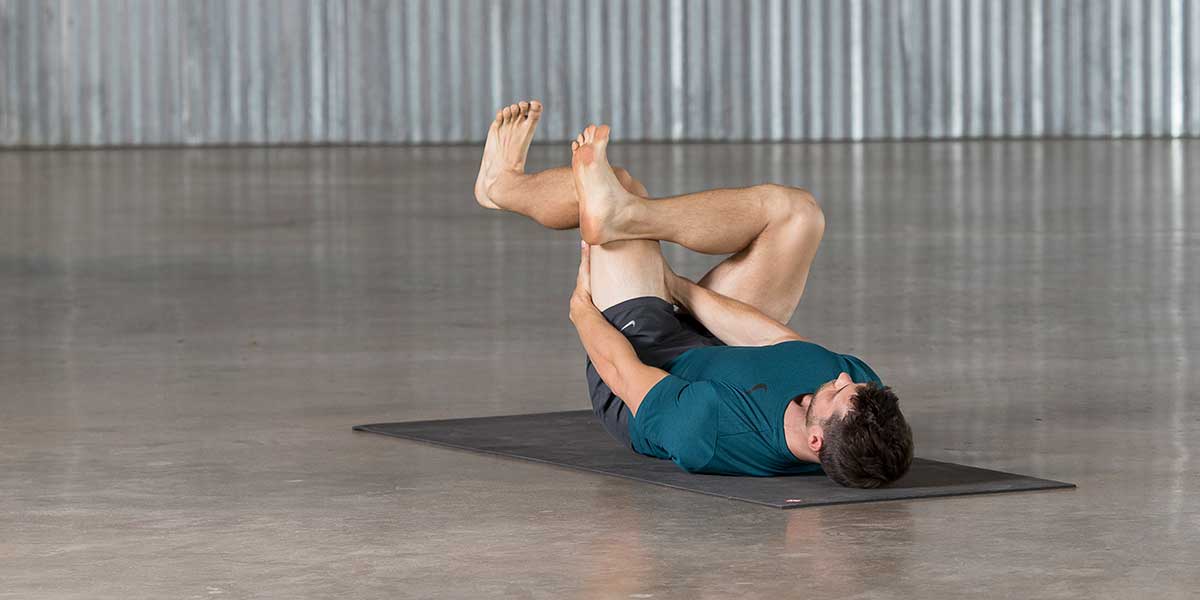
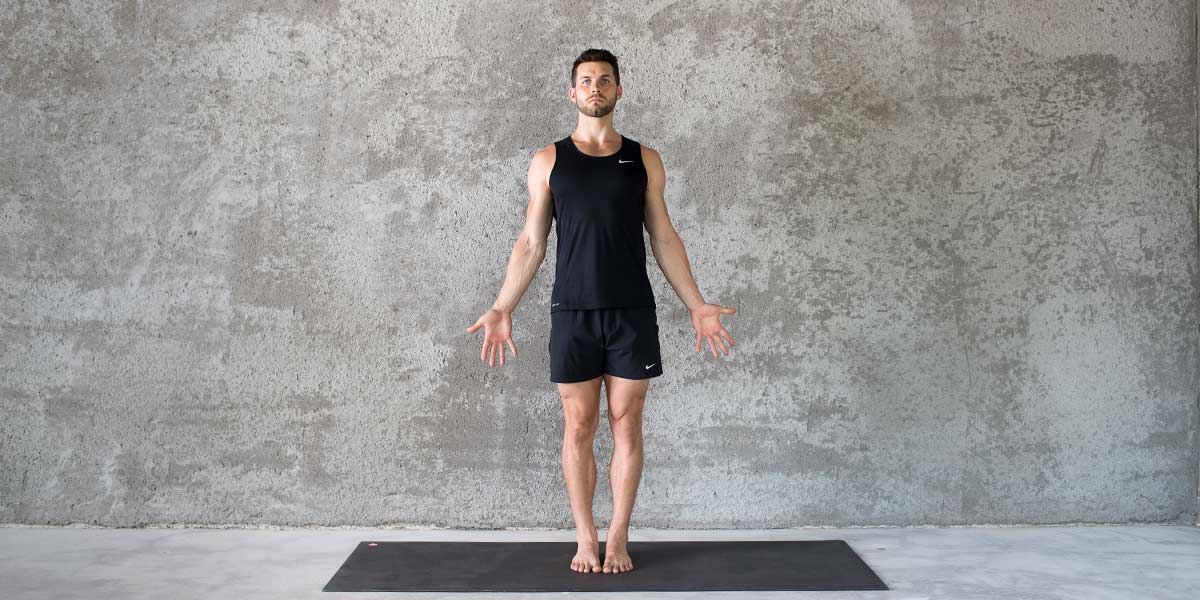

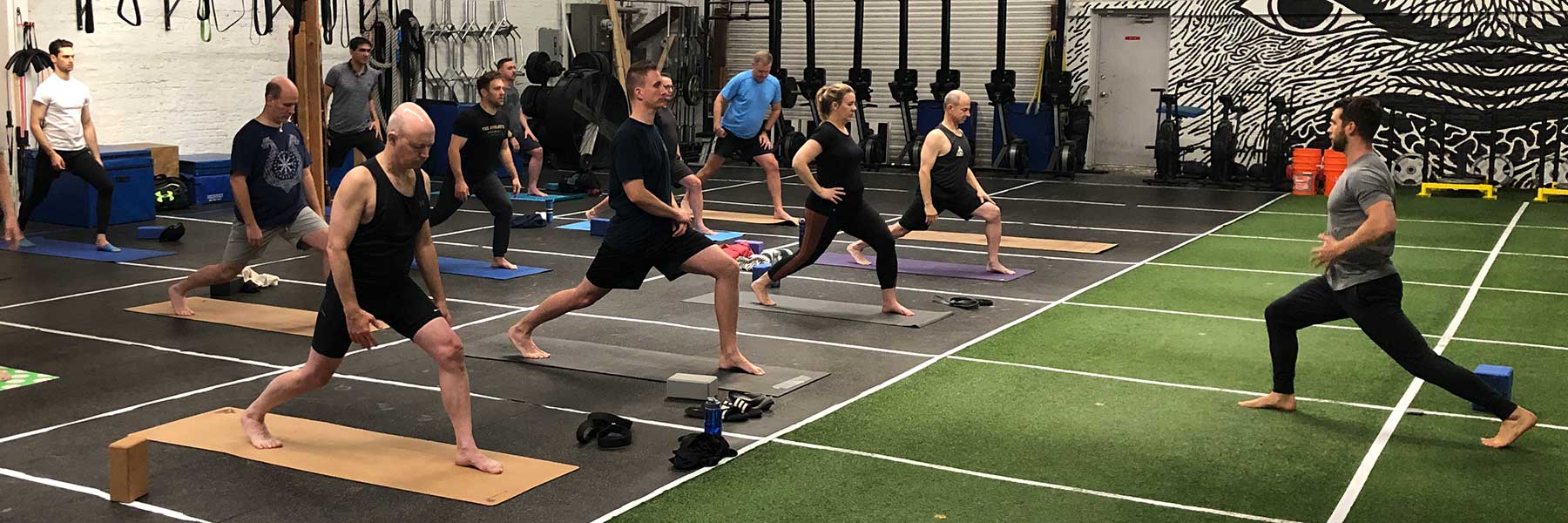
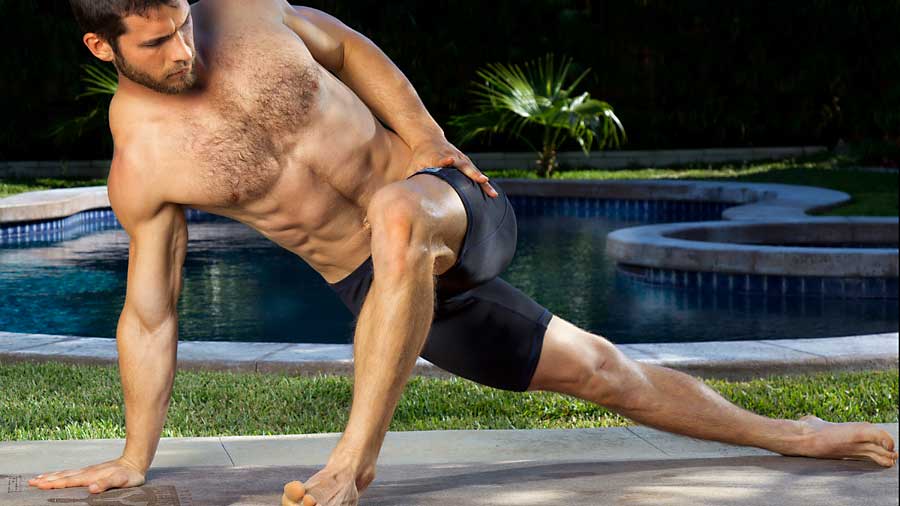


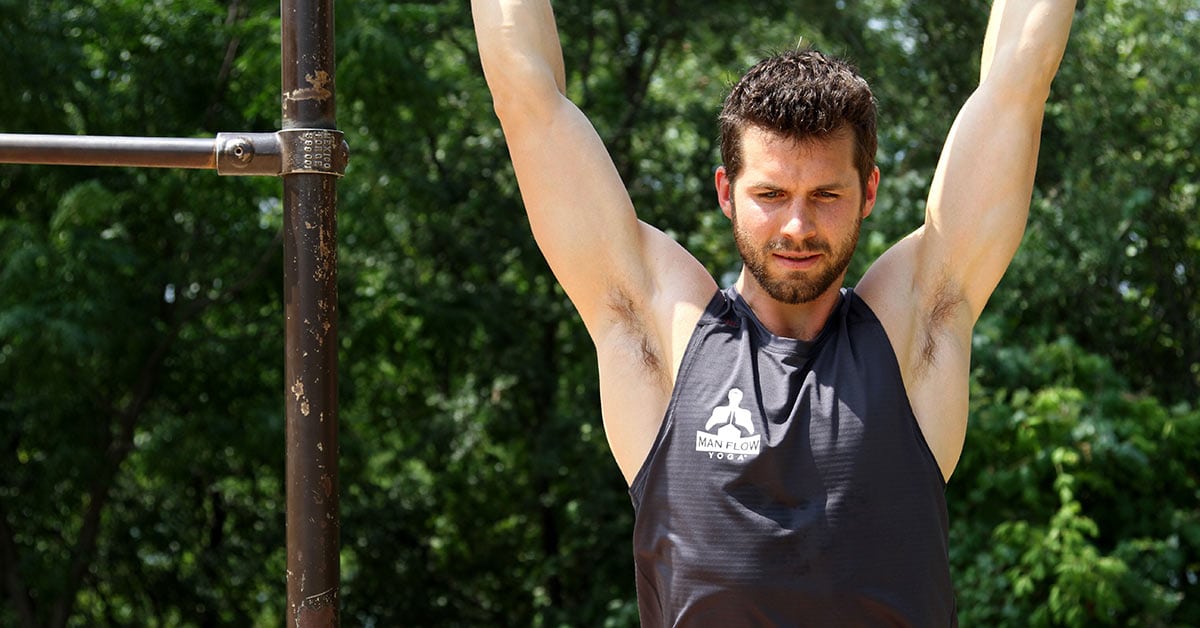
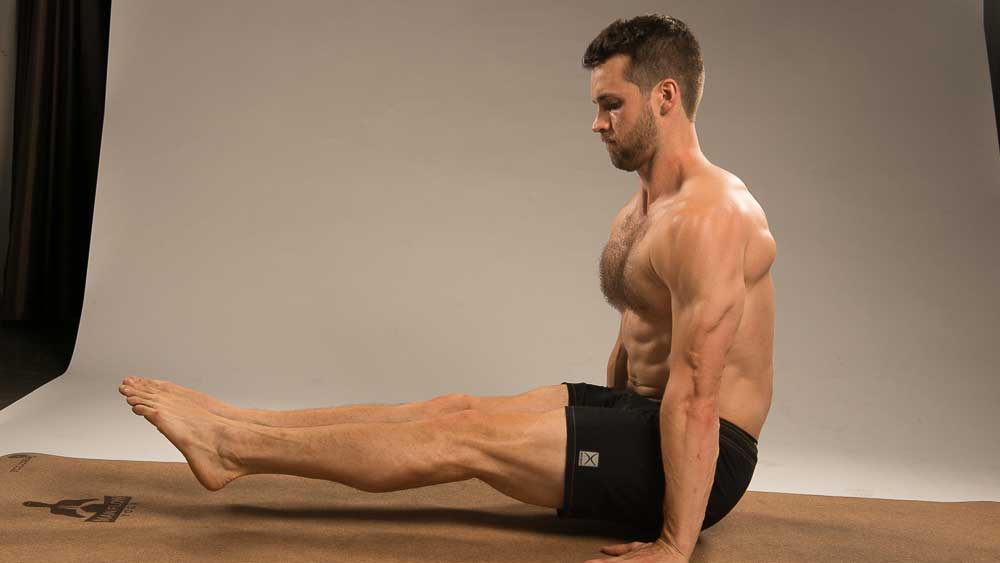
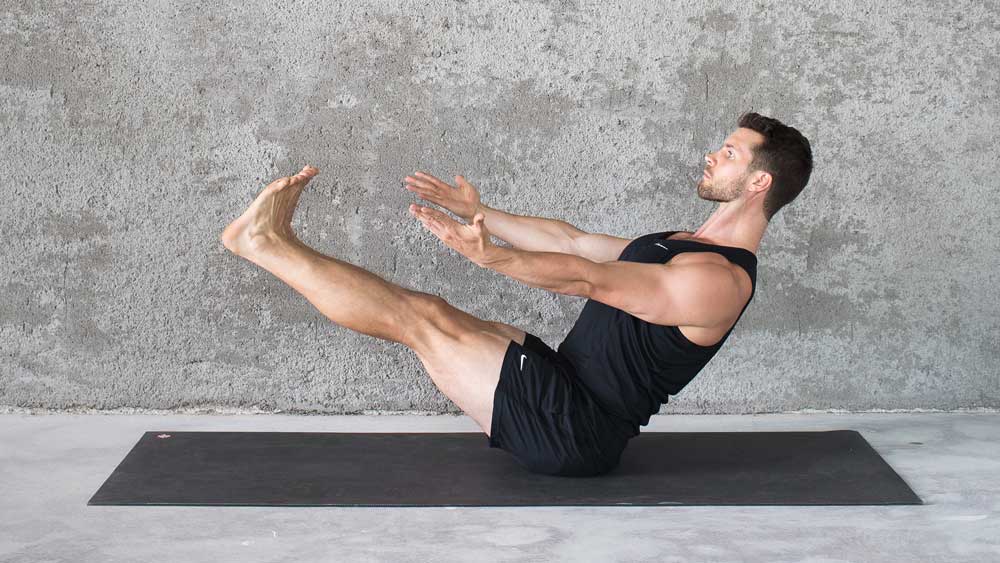
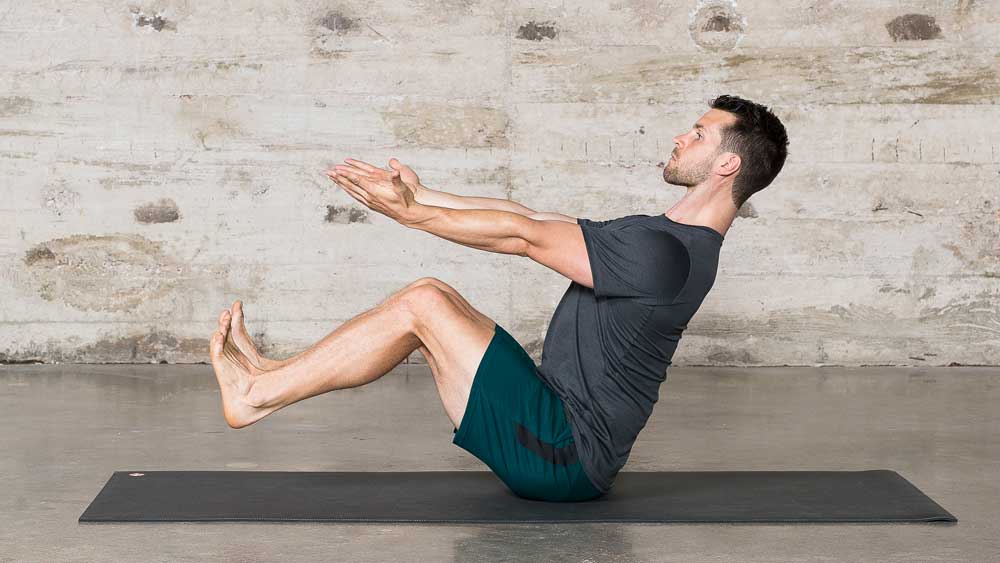
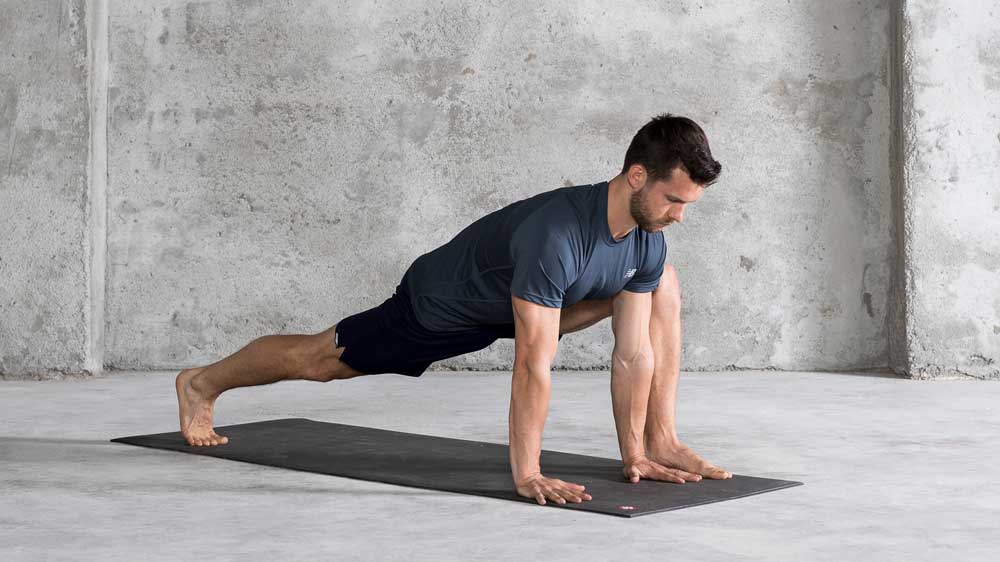
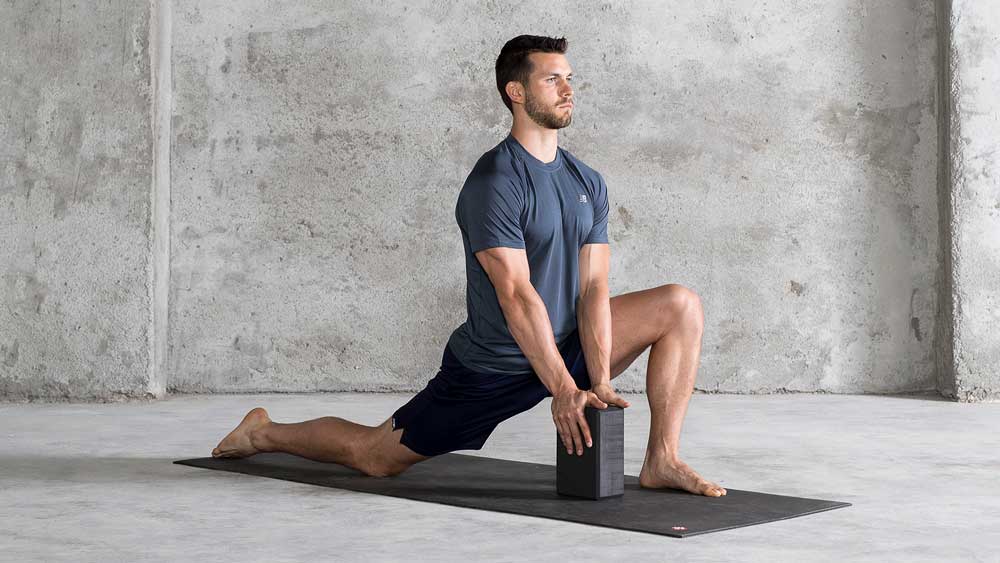
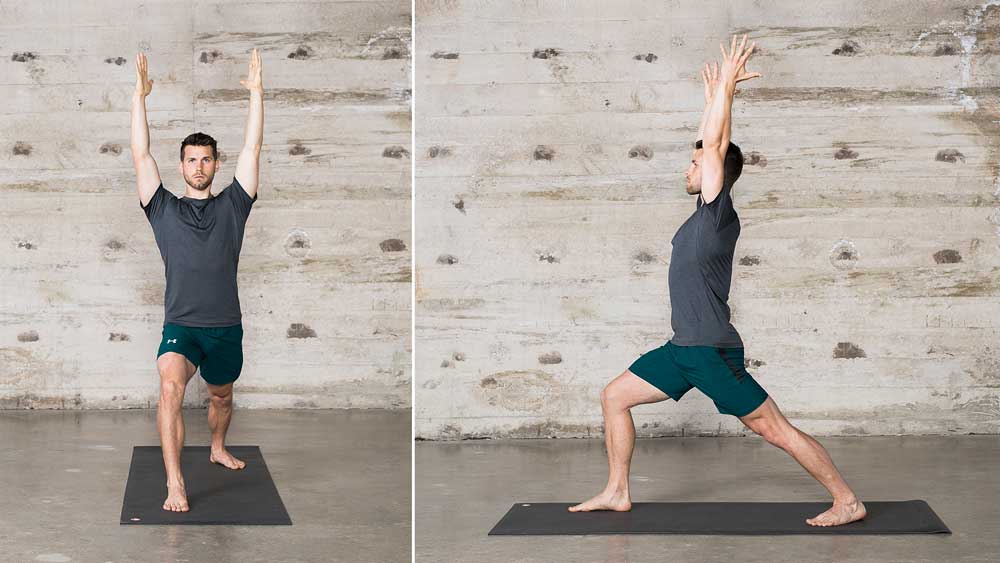
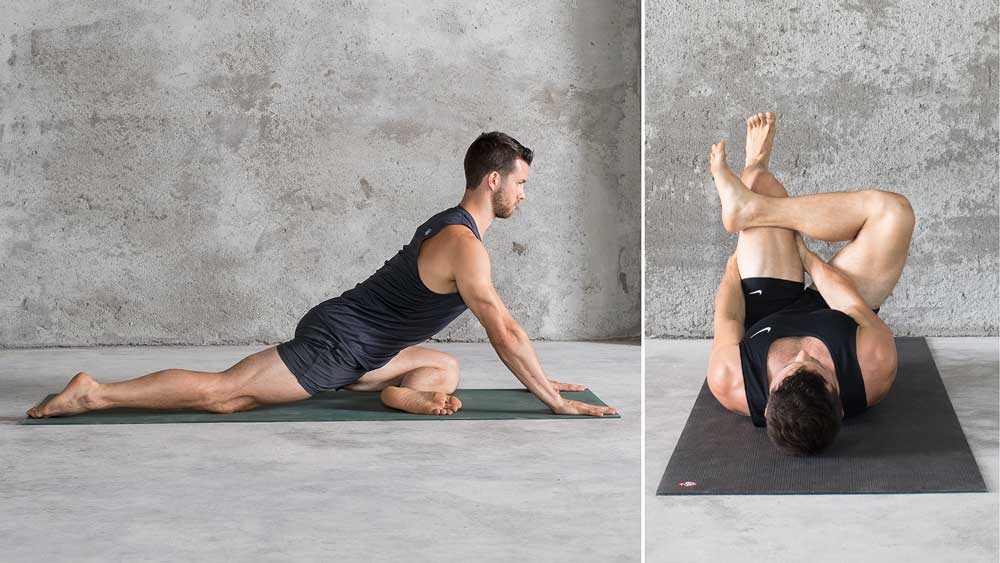

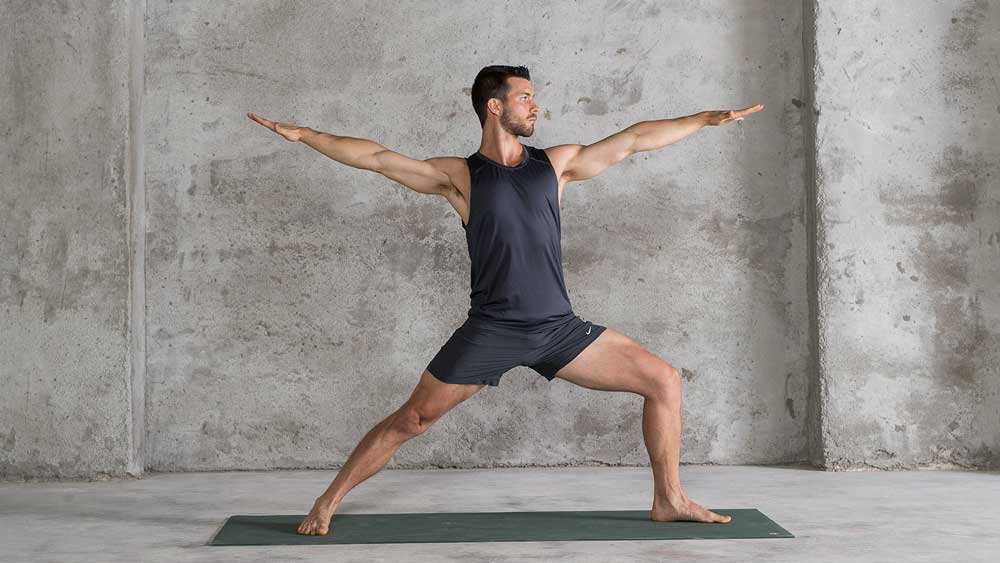
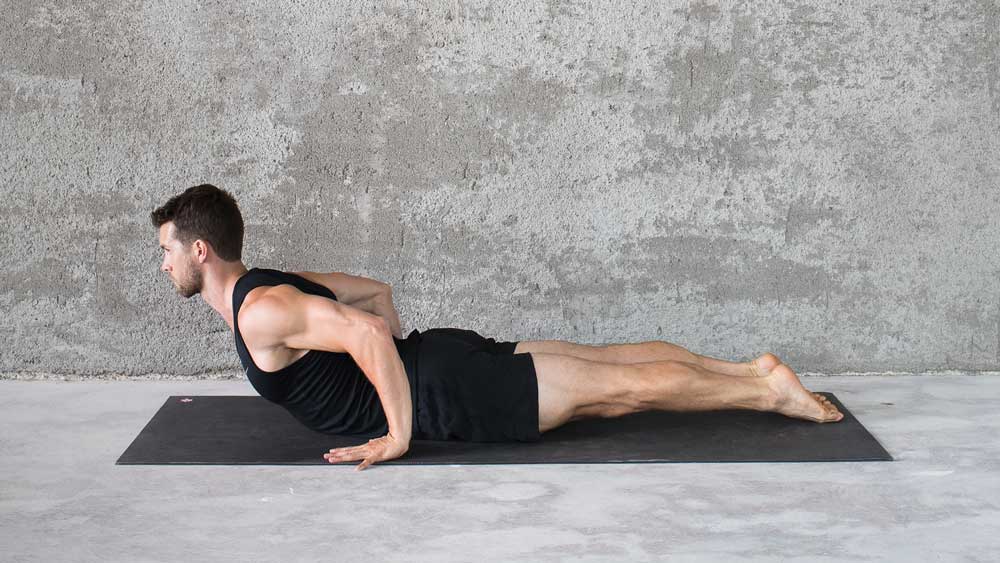
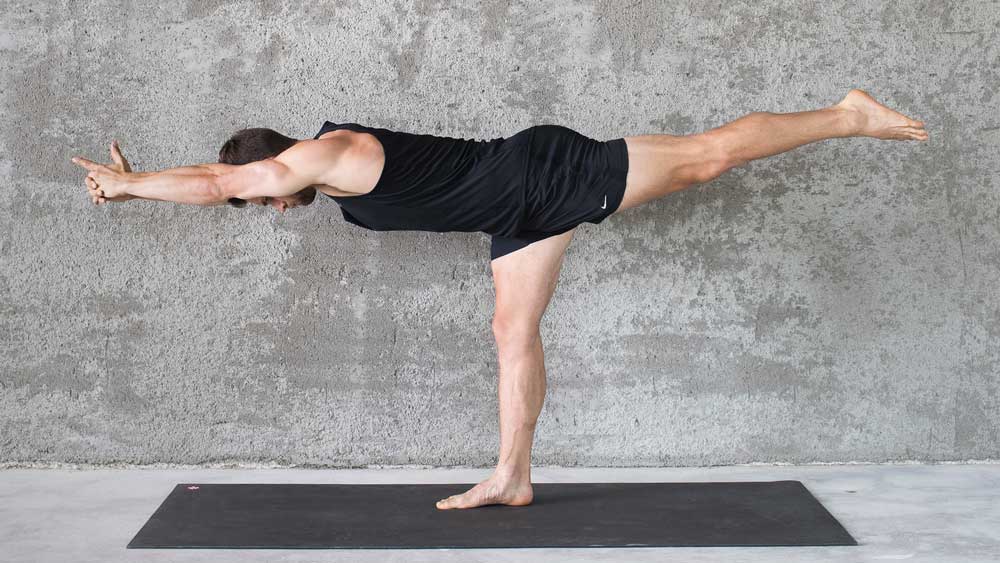





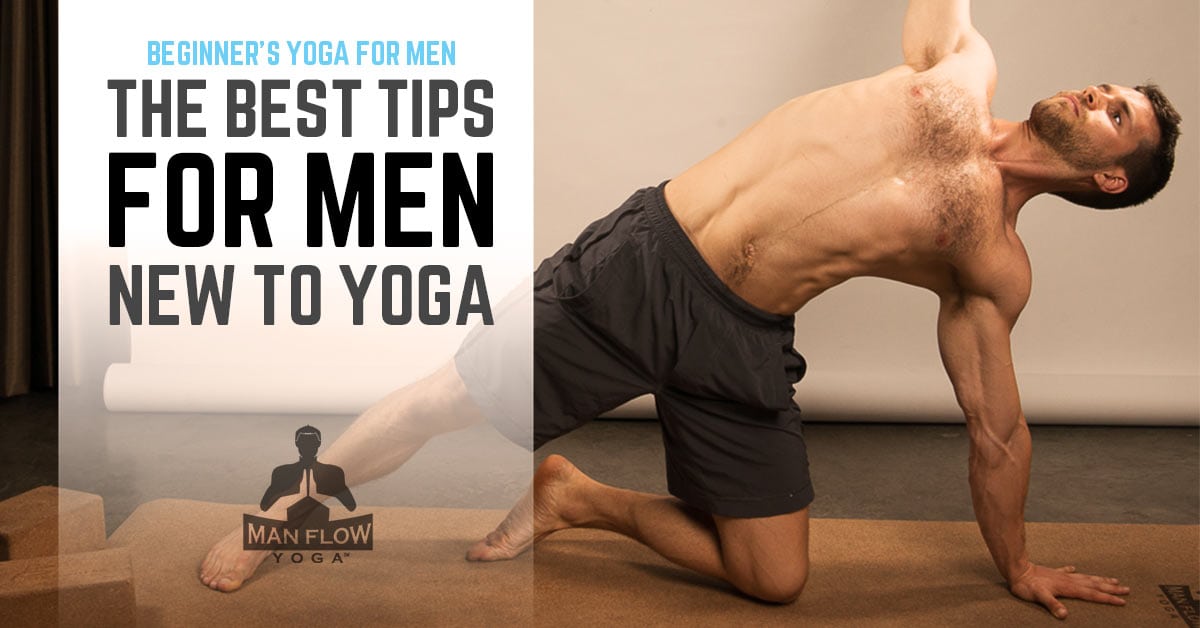
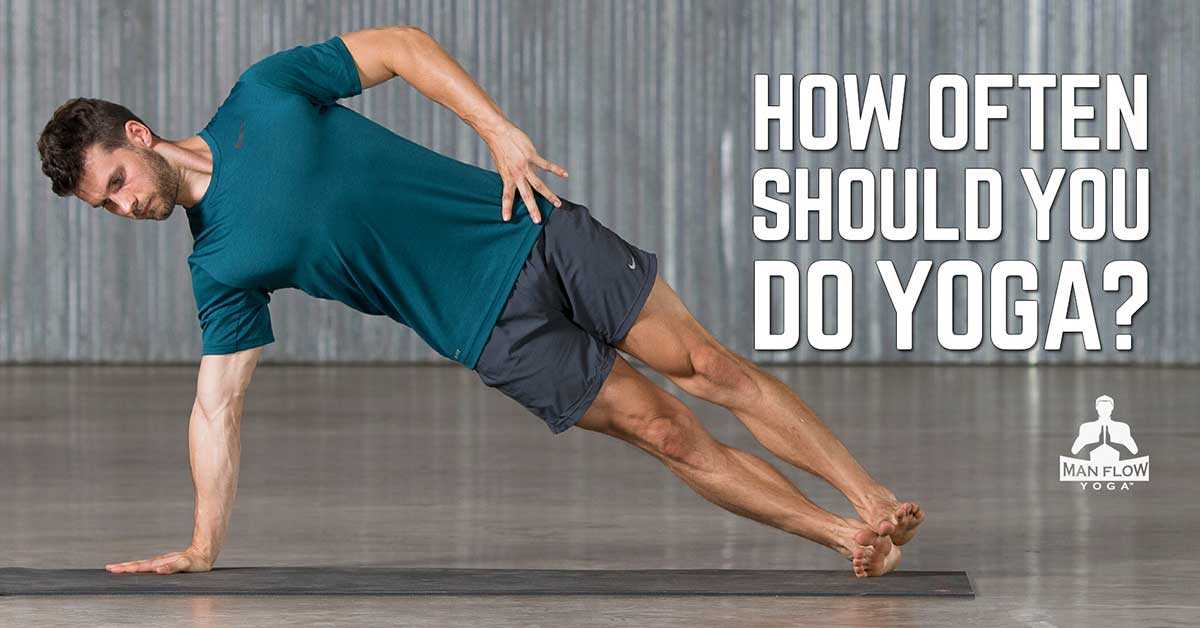
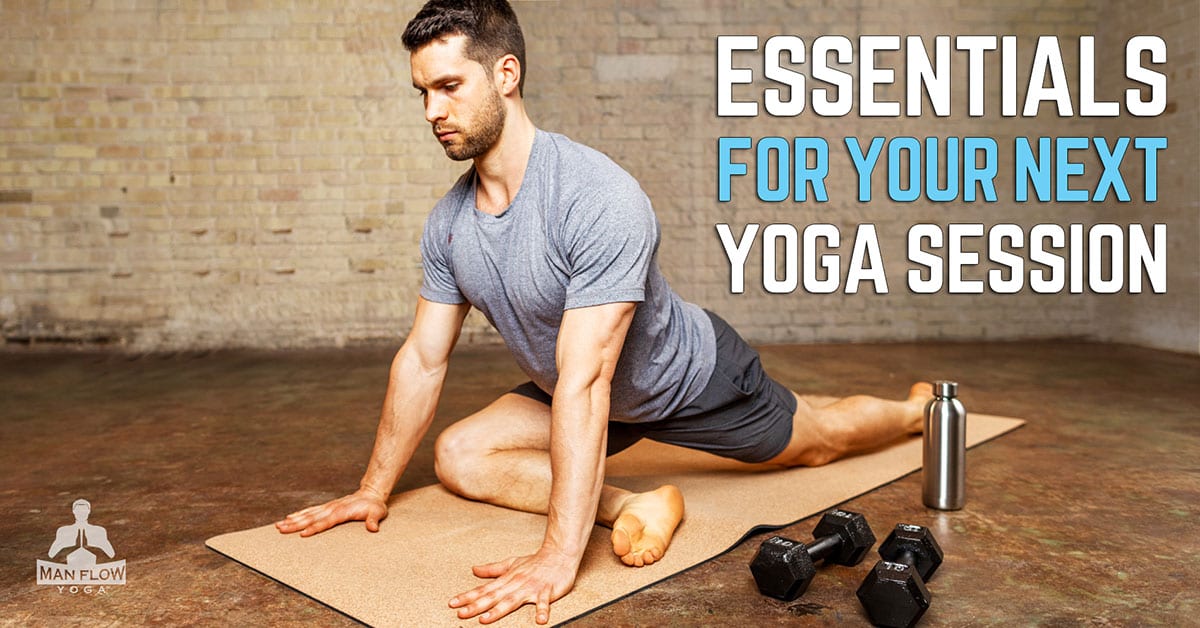
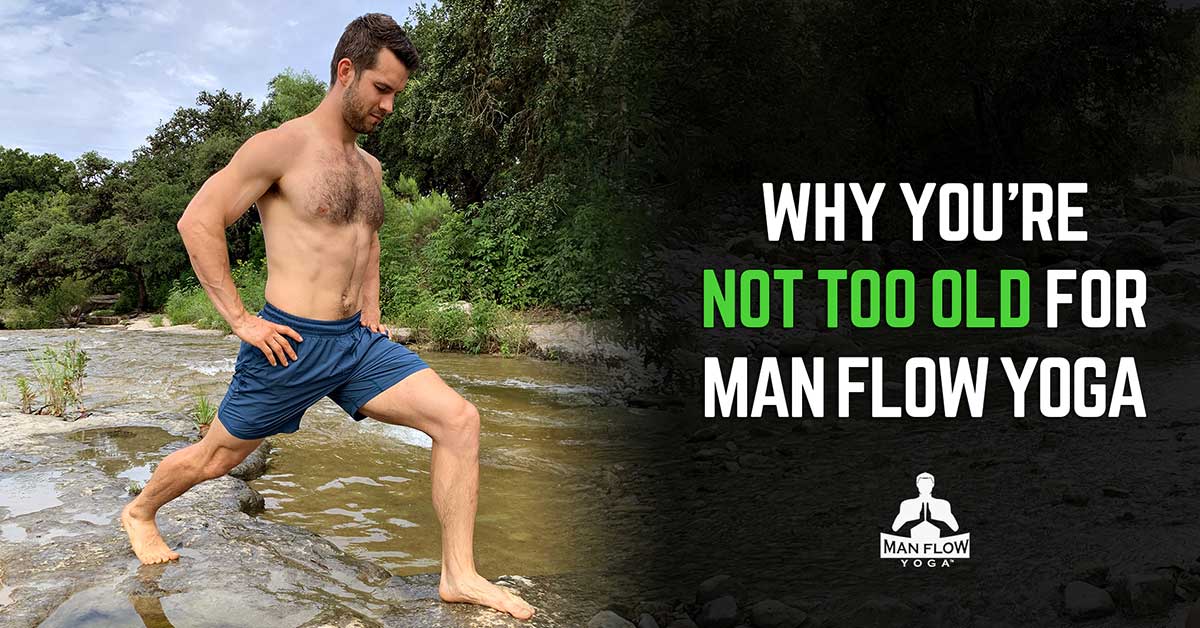
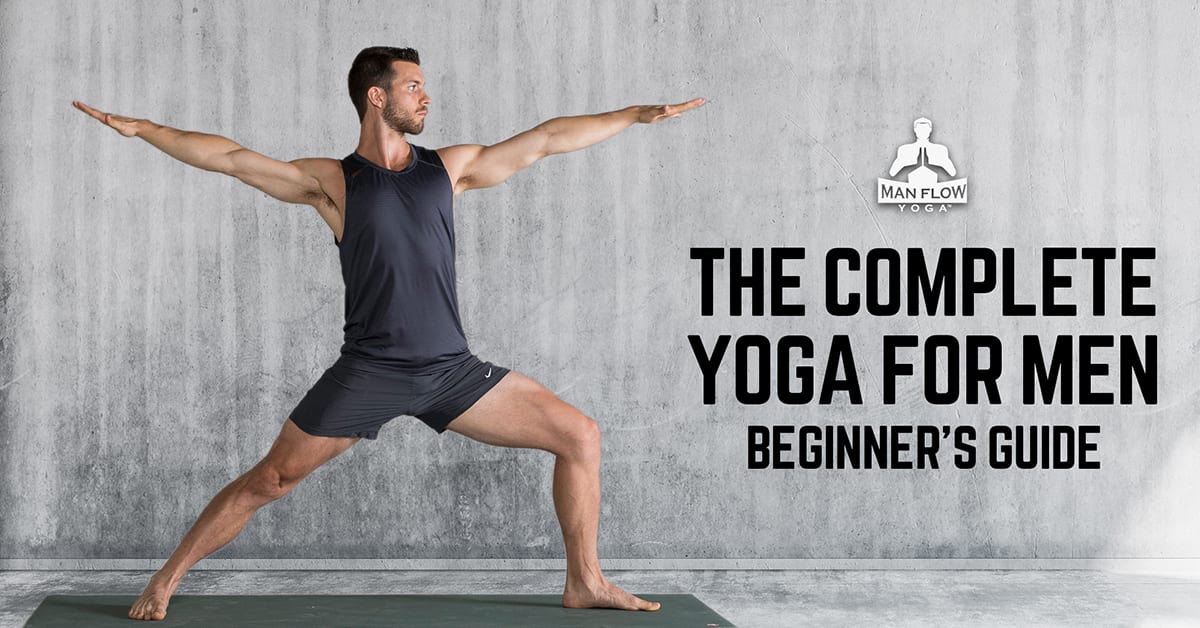
I’m trying to come up with a good way to stay fit when staying inside. It makes sense that yoga would be a good thing to look into! It’s great that there are so many benefits for it. I’ll have to see if I can get some yoga videos that I can use to practice my poses.
Love this guide! As a beginner myself, I appreciate the clear and concise instructions. Can’t wait to start my yoga practice and see the benefits for myself. Thanks for sharing!